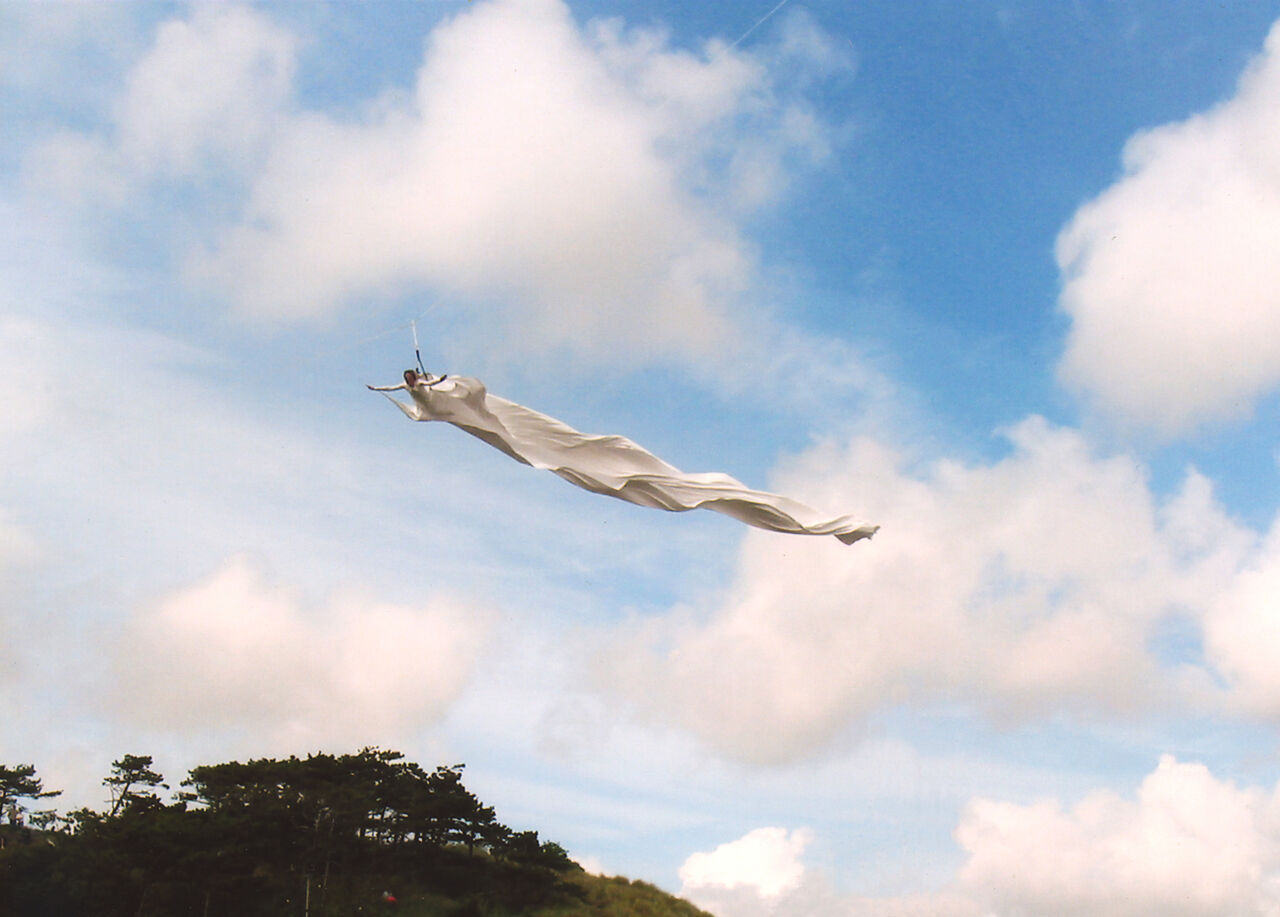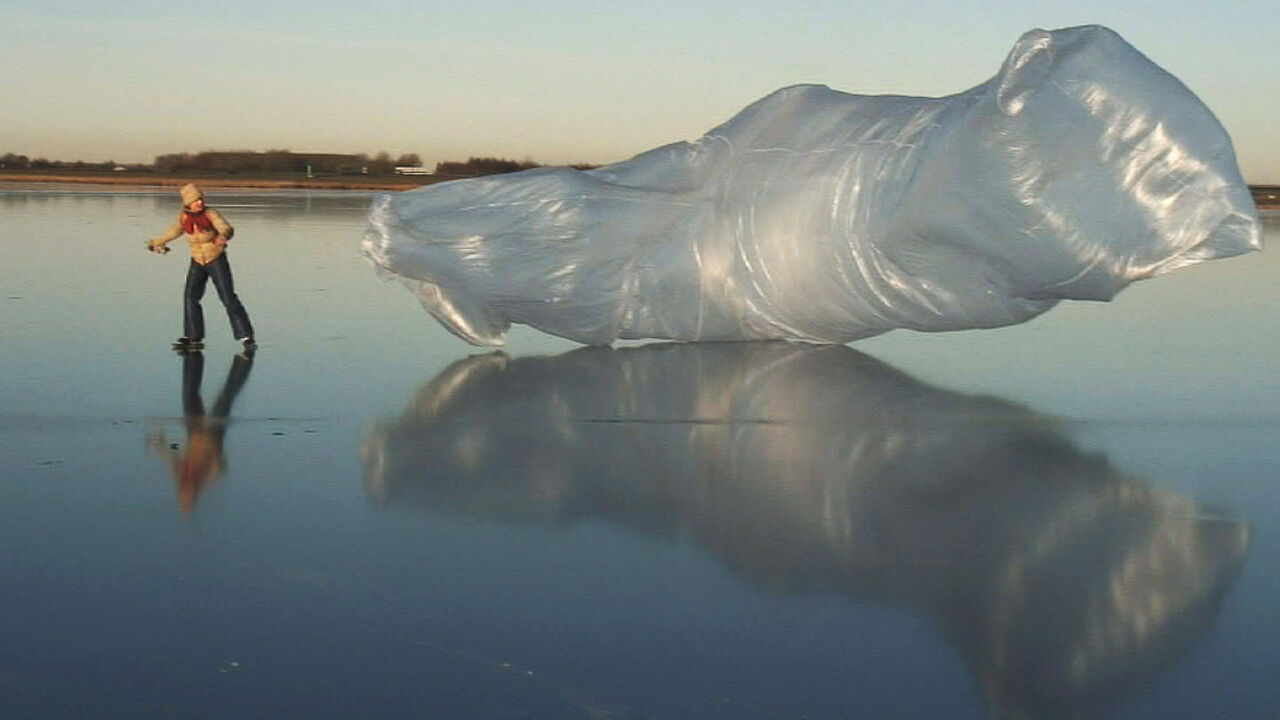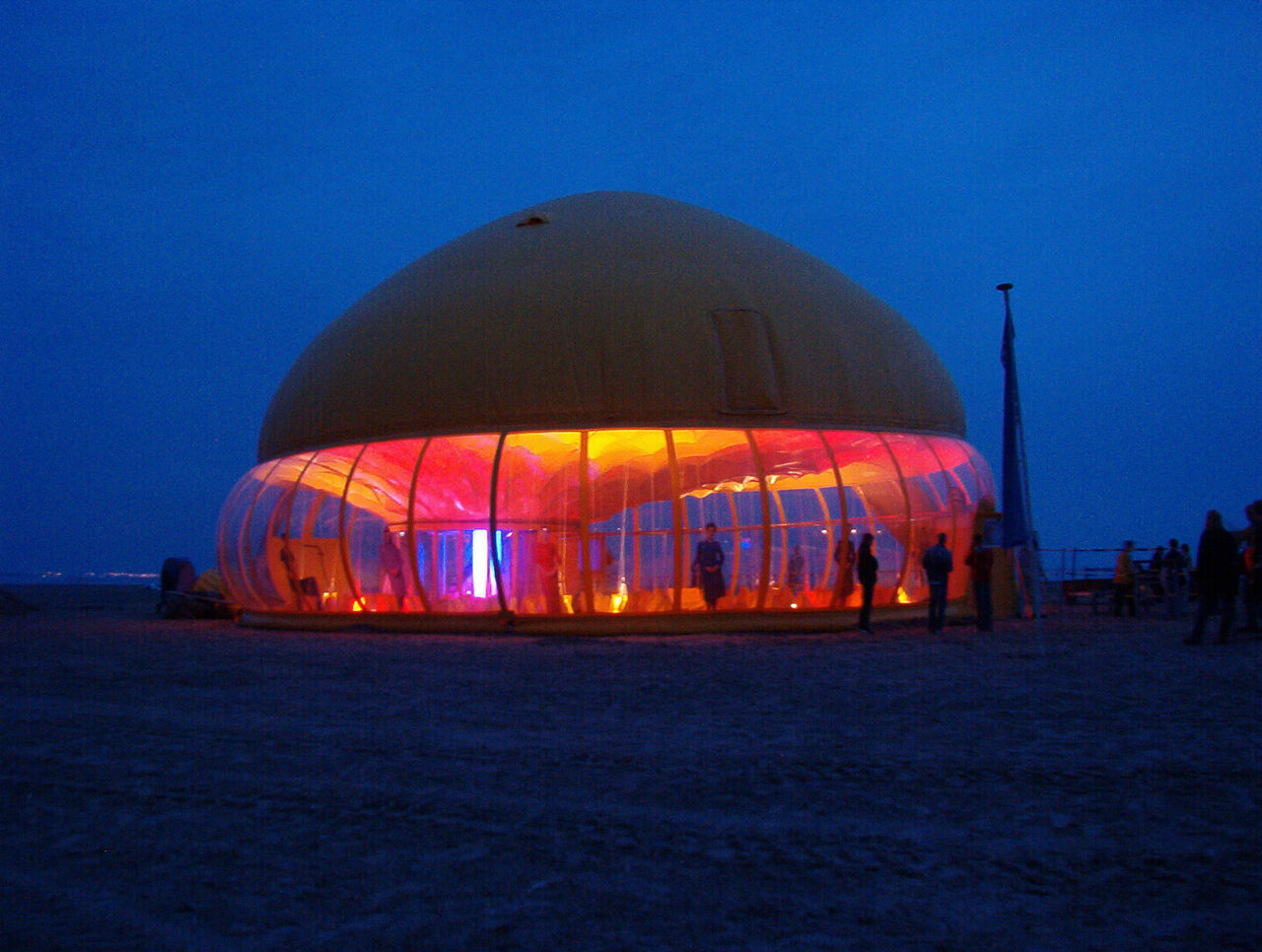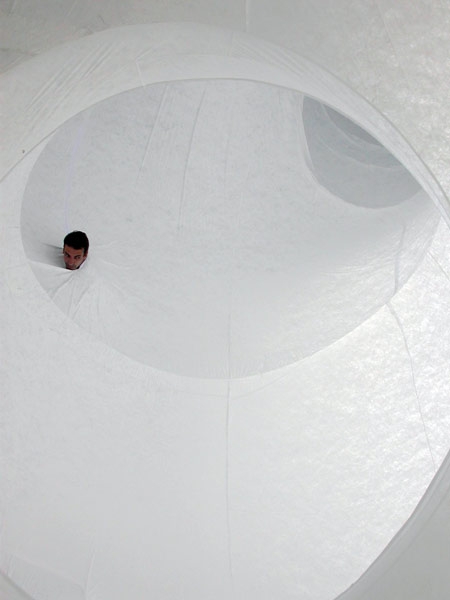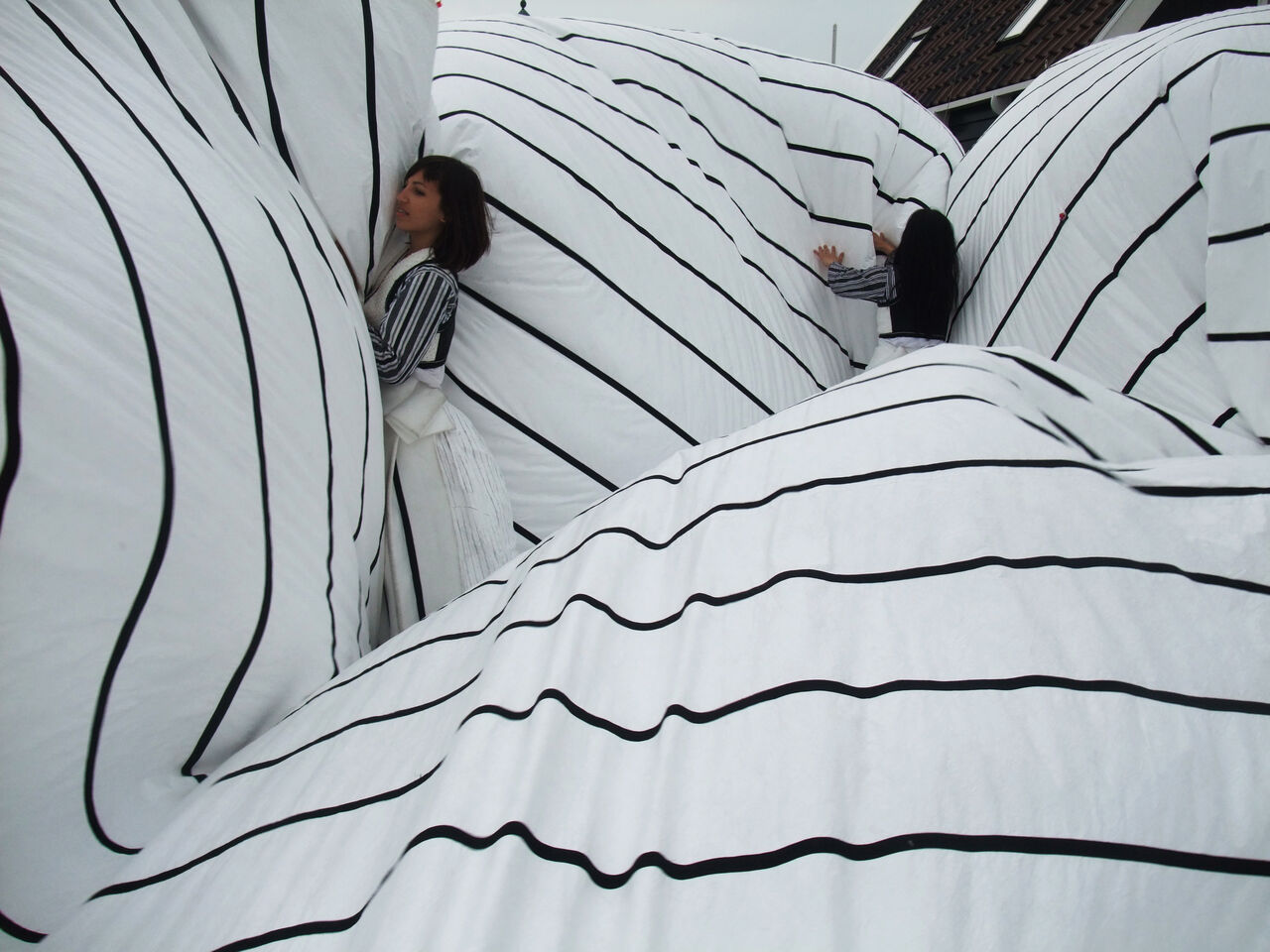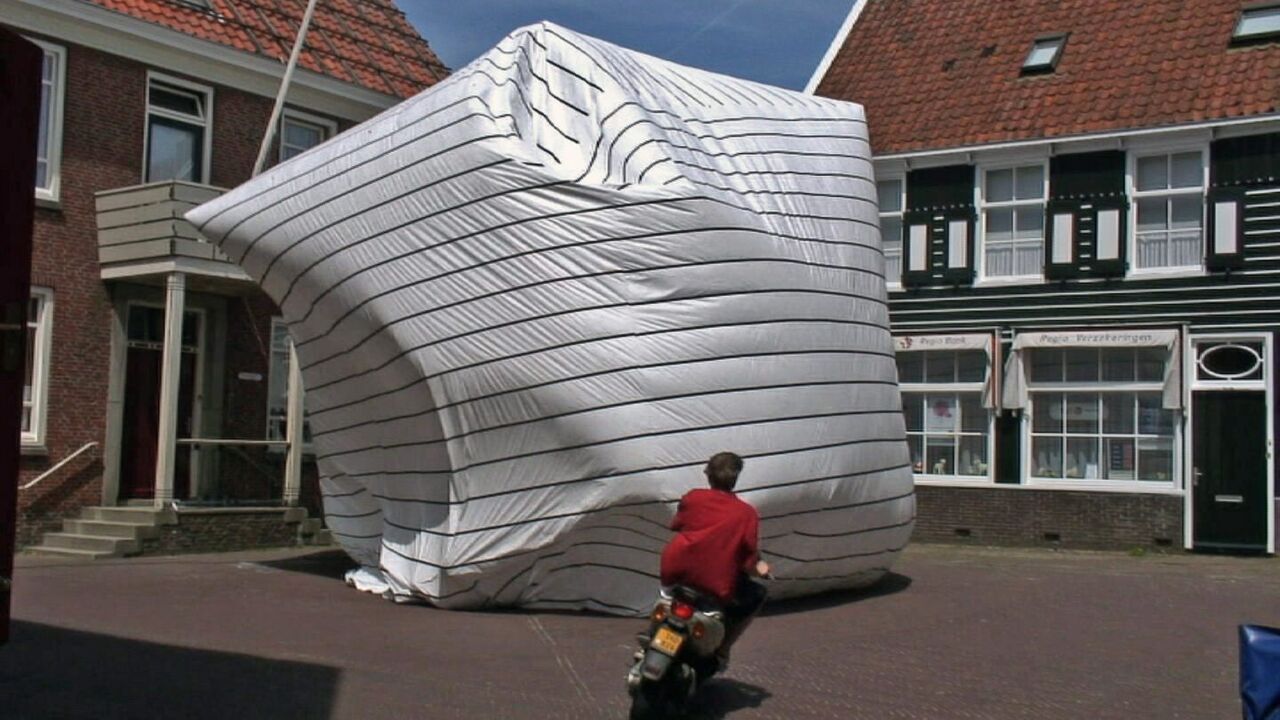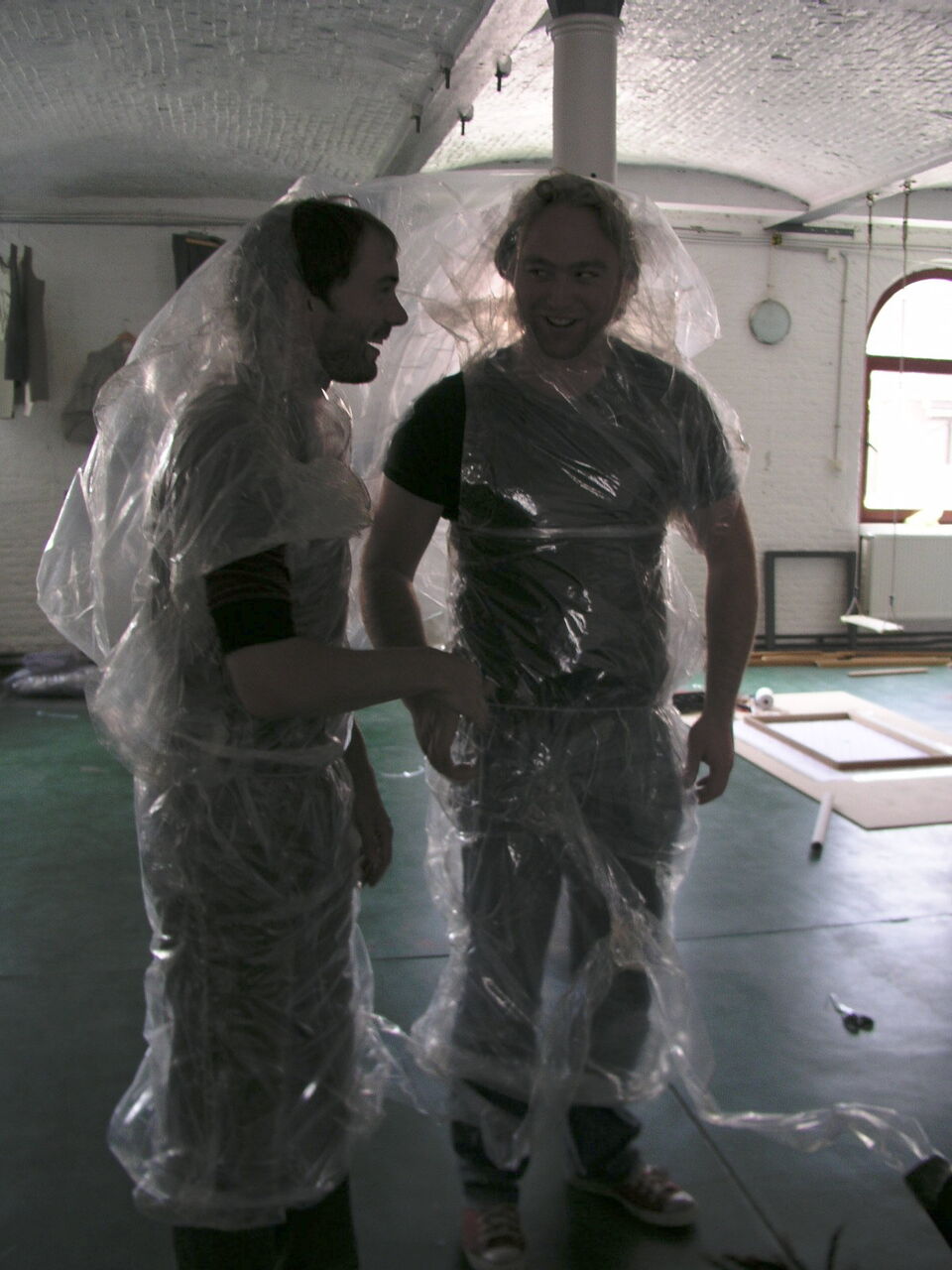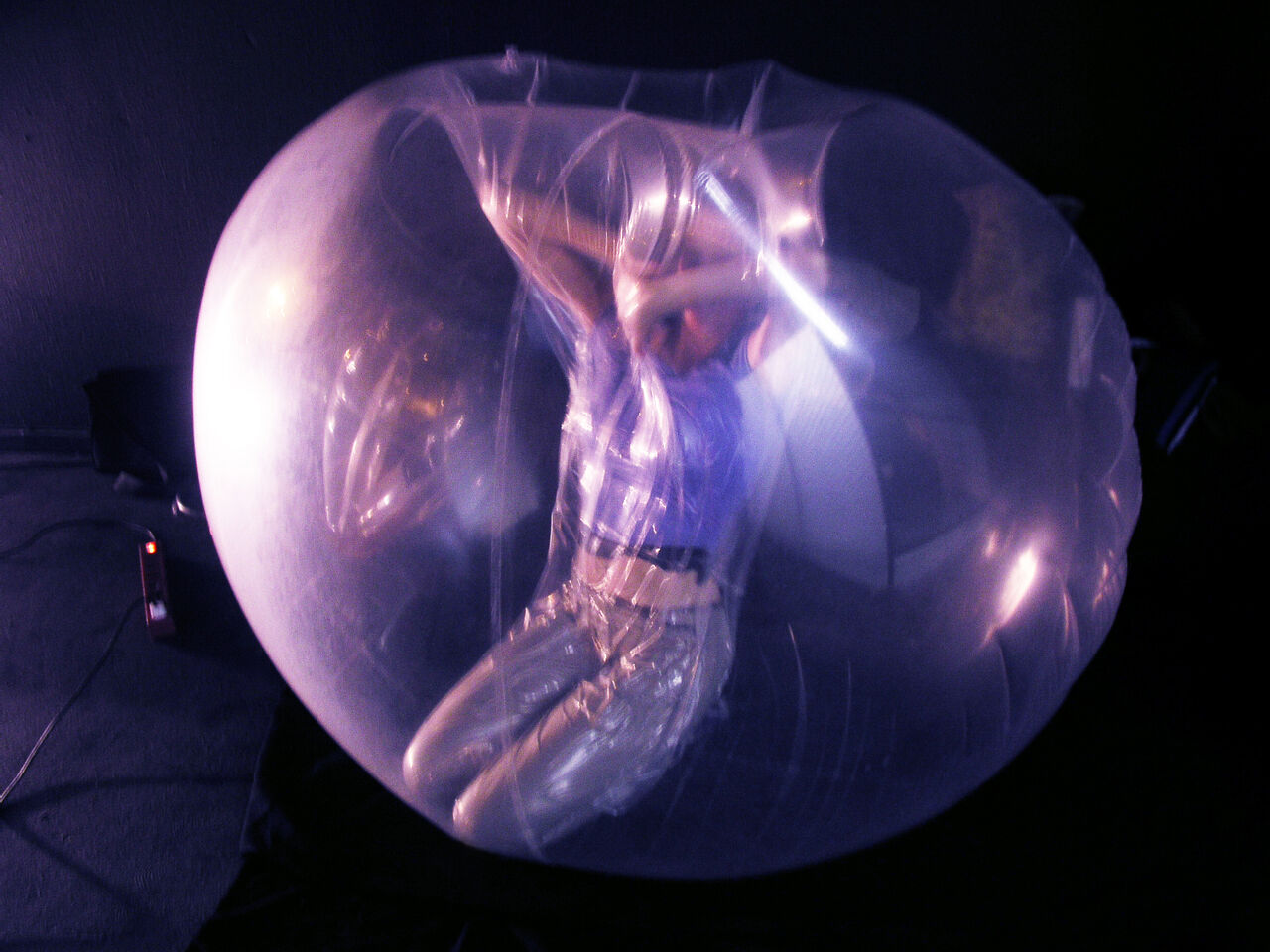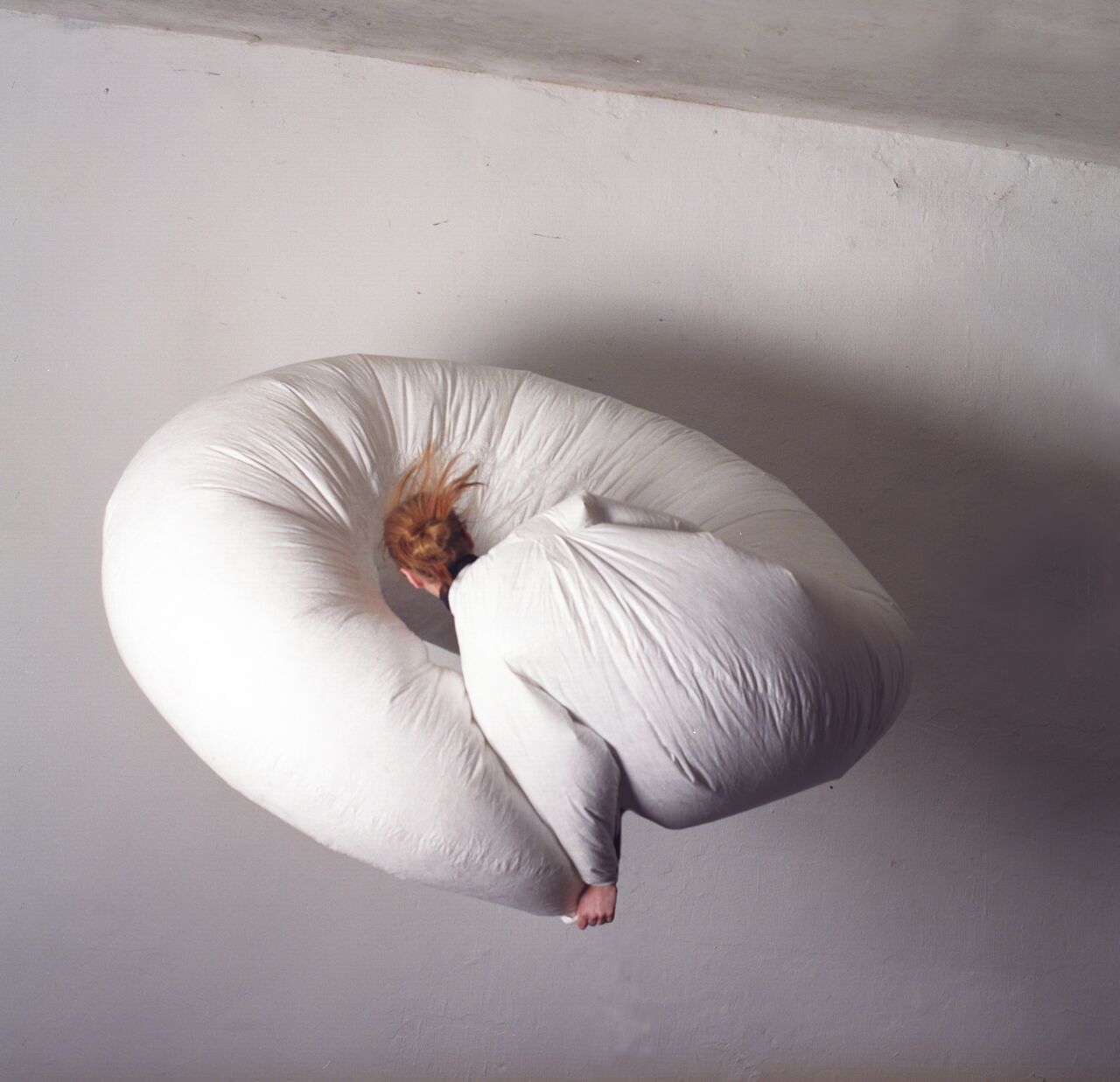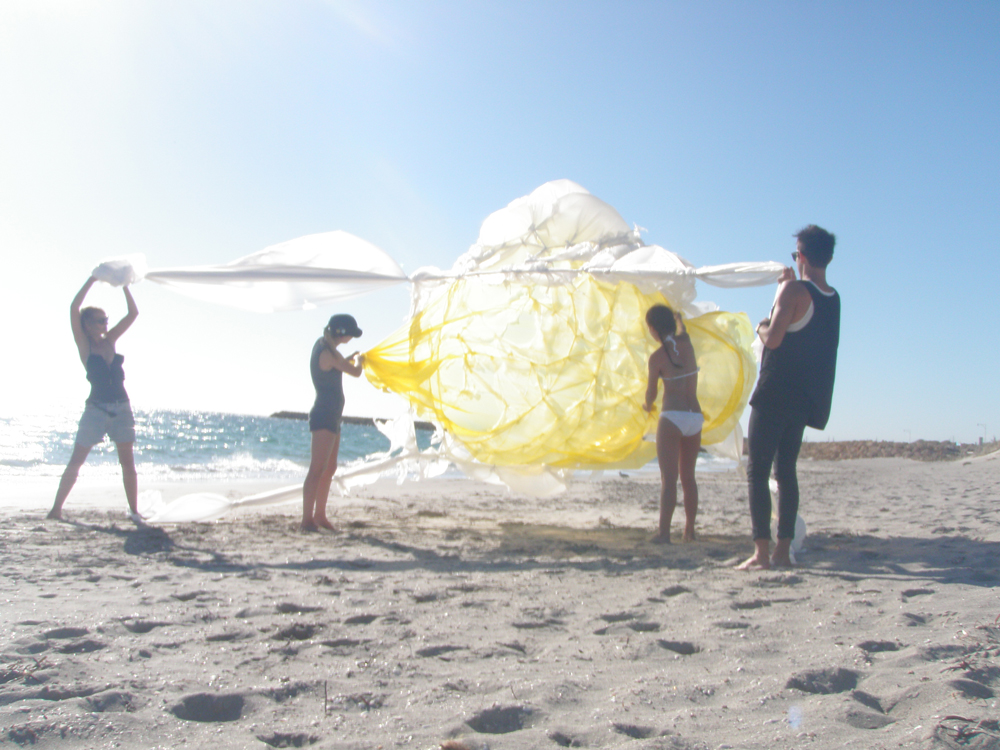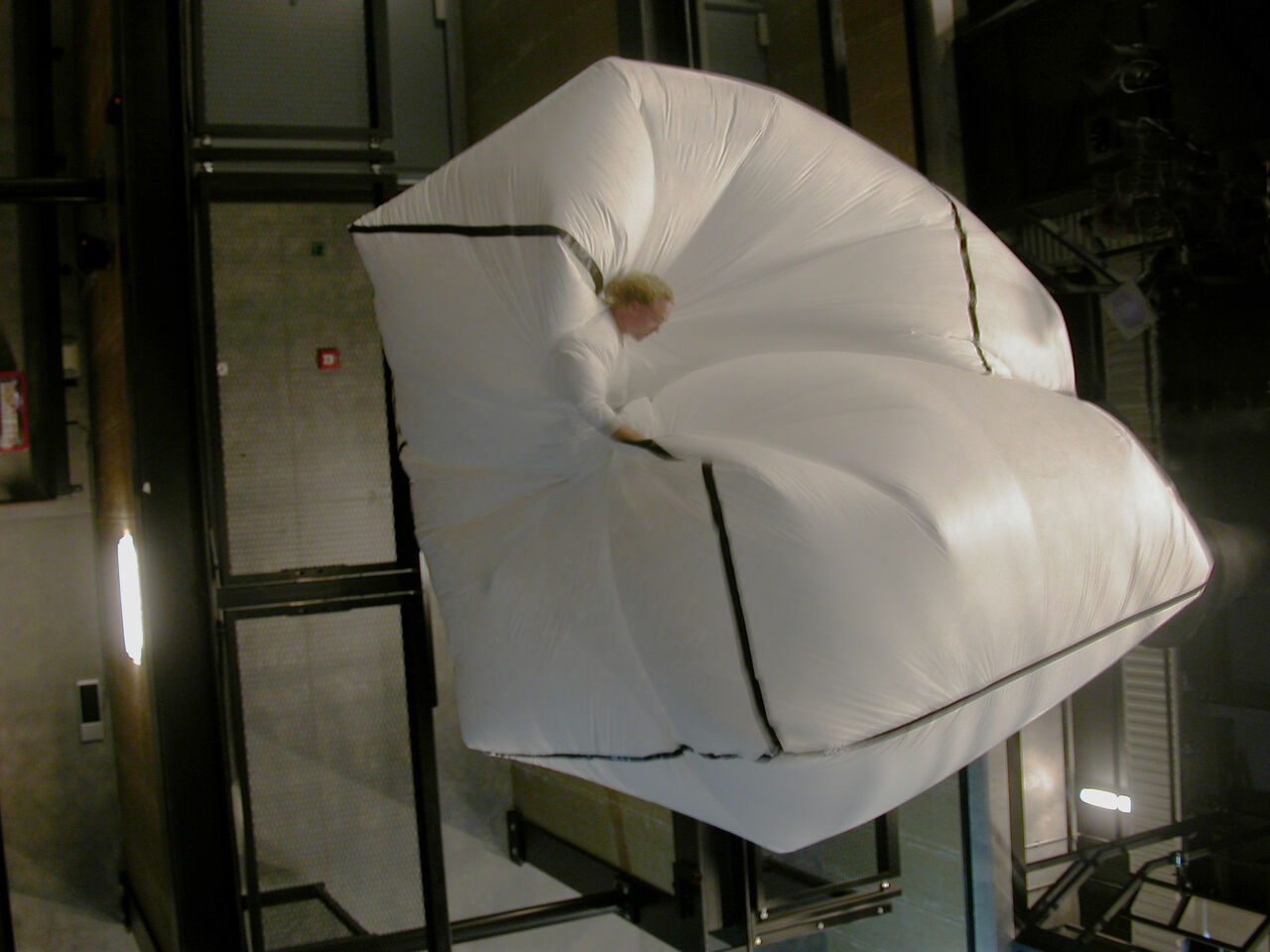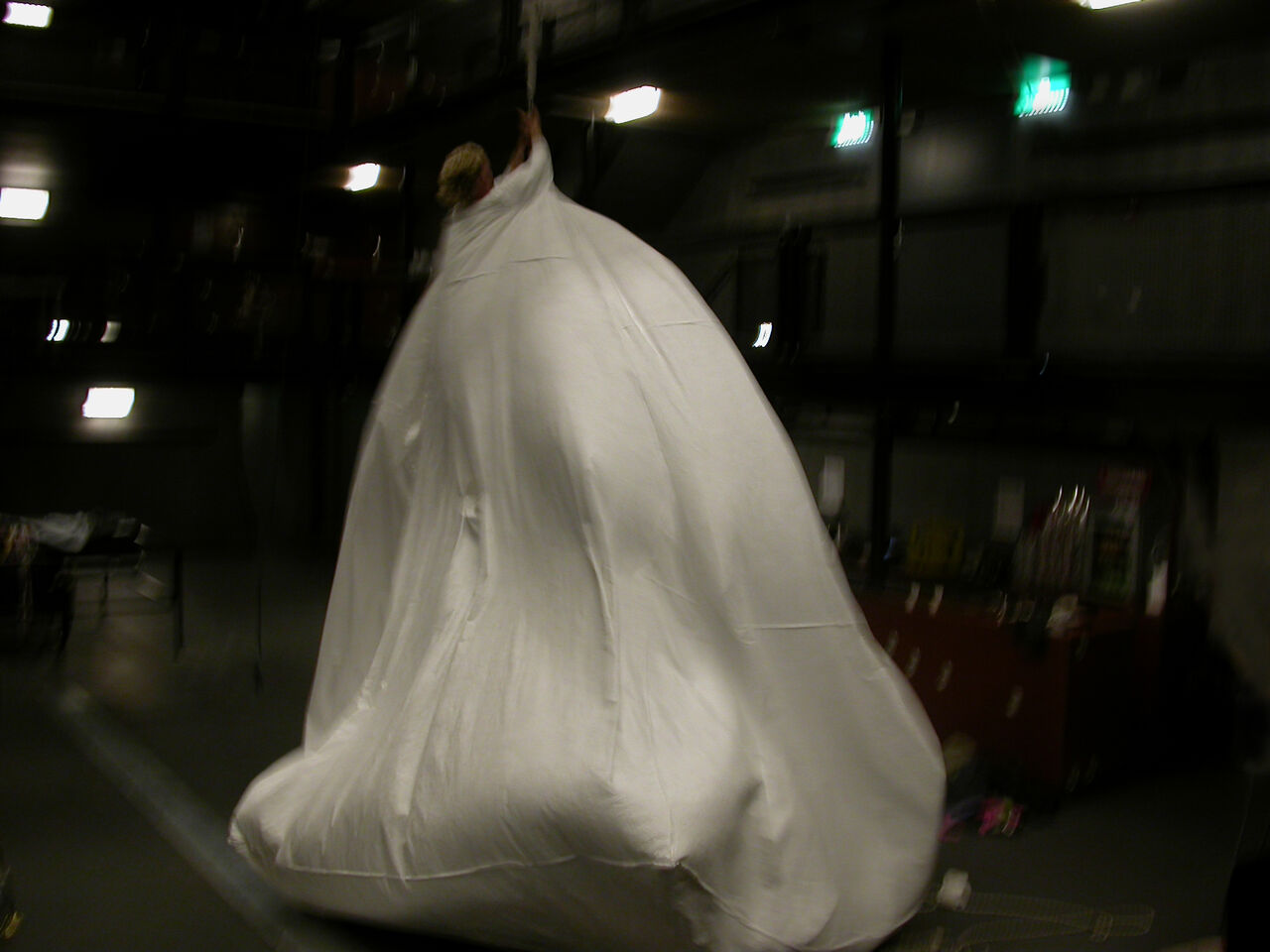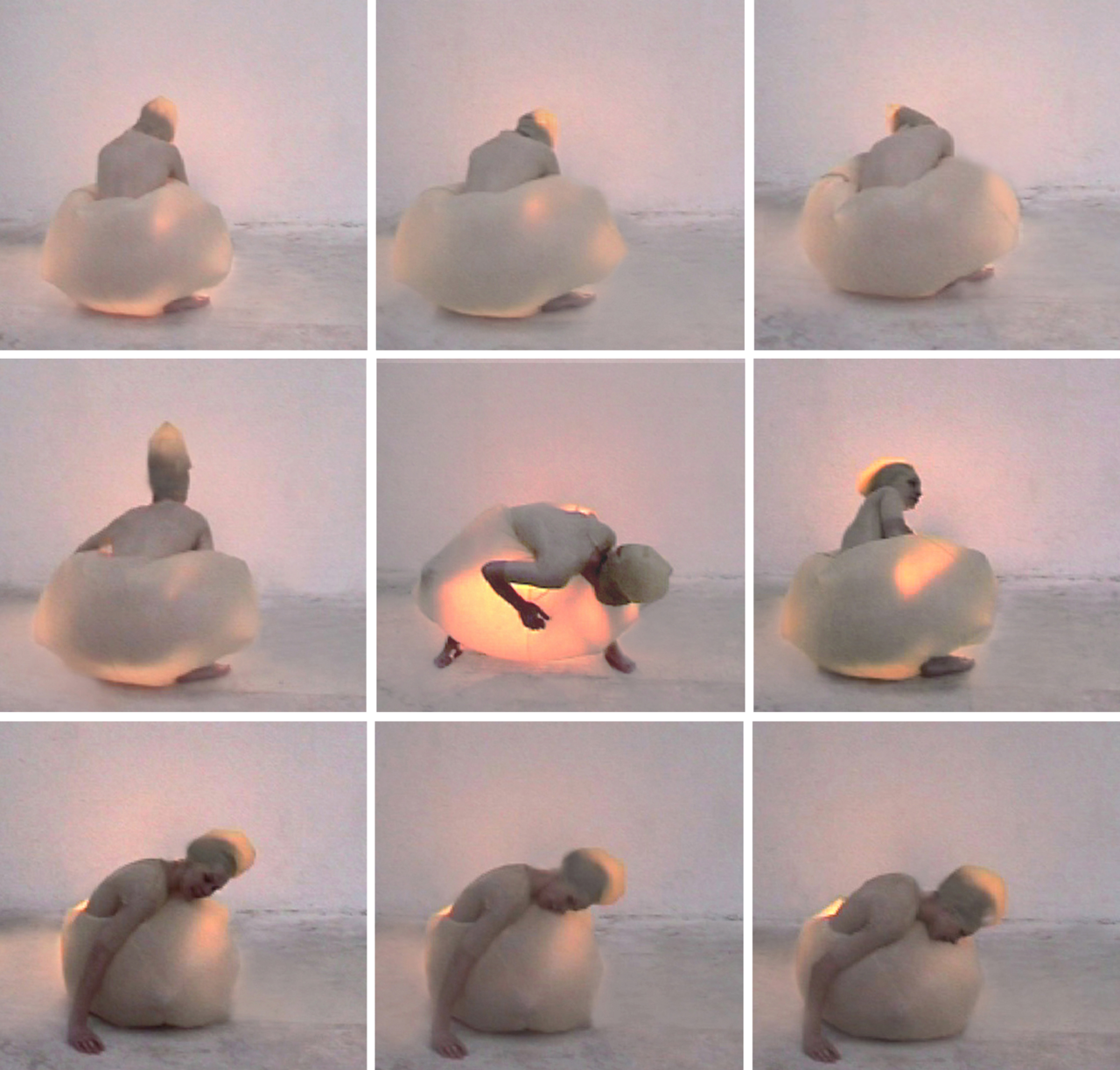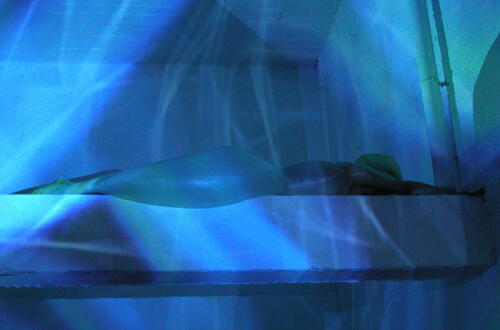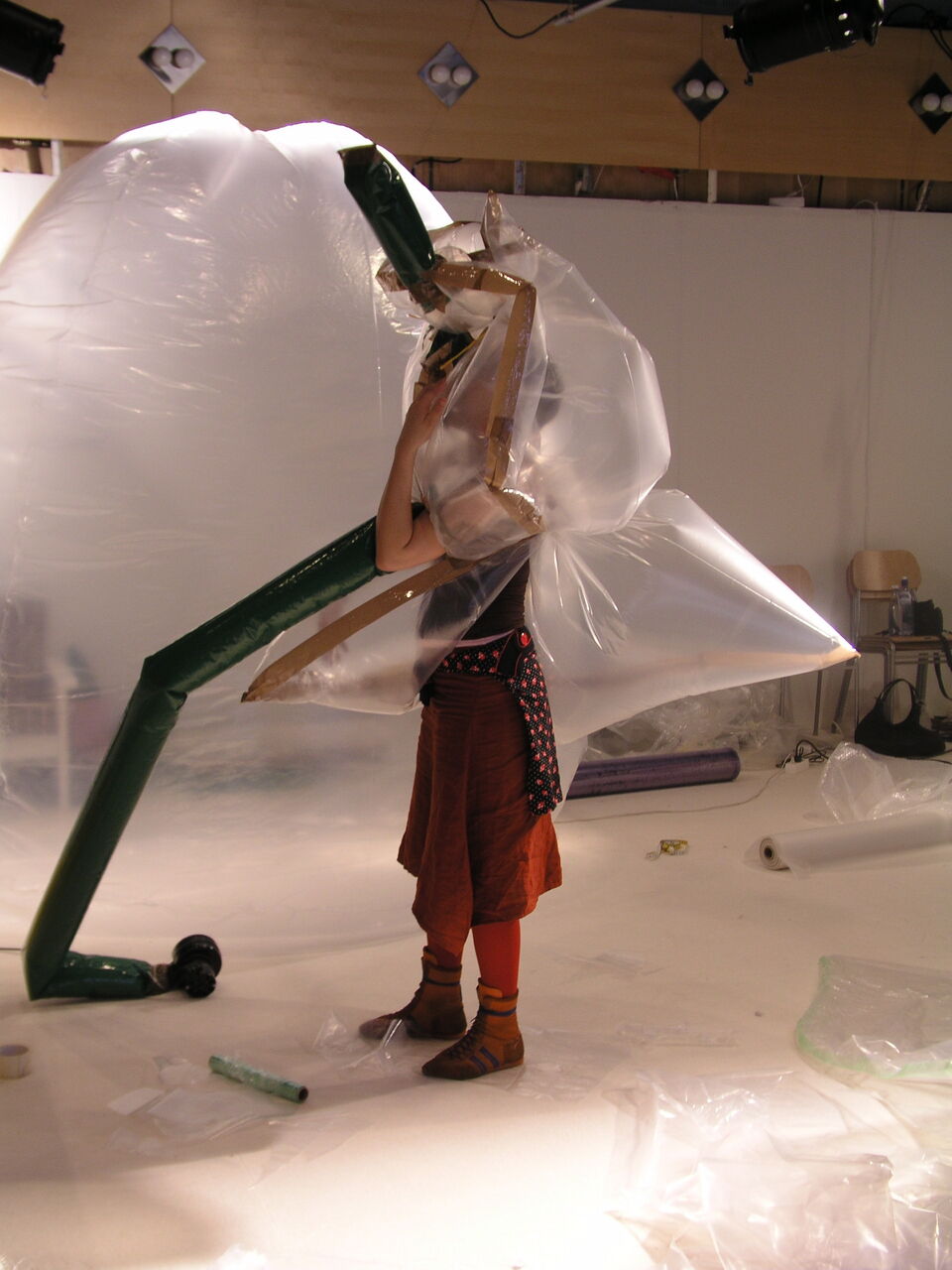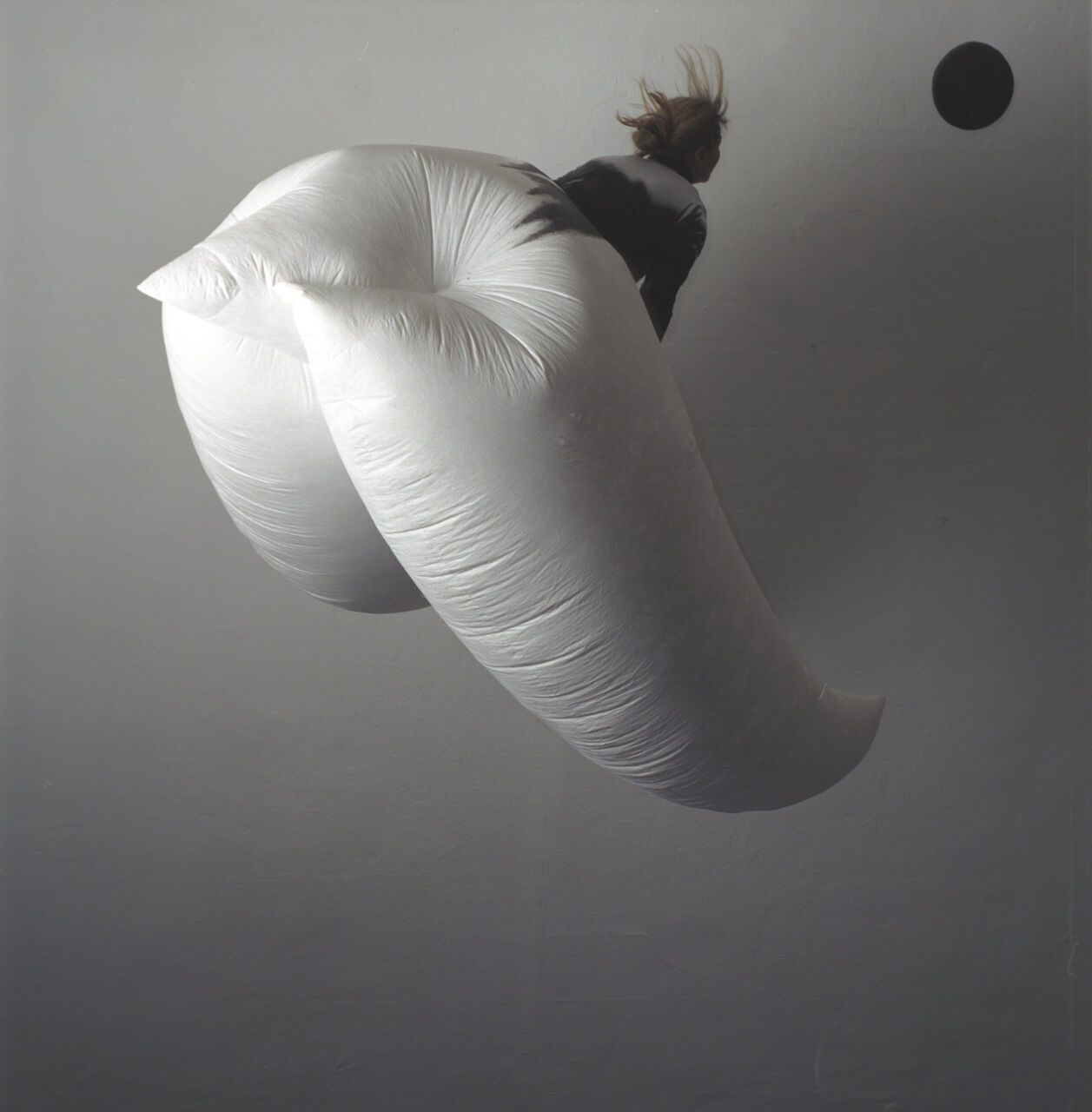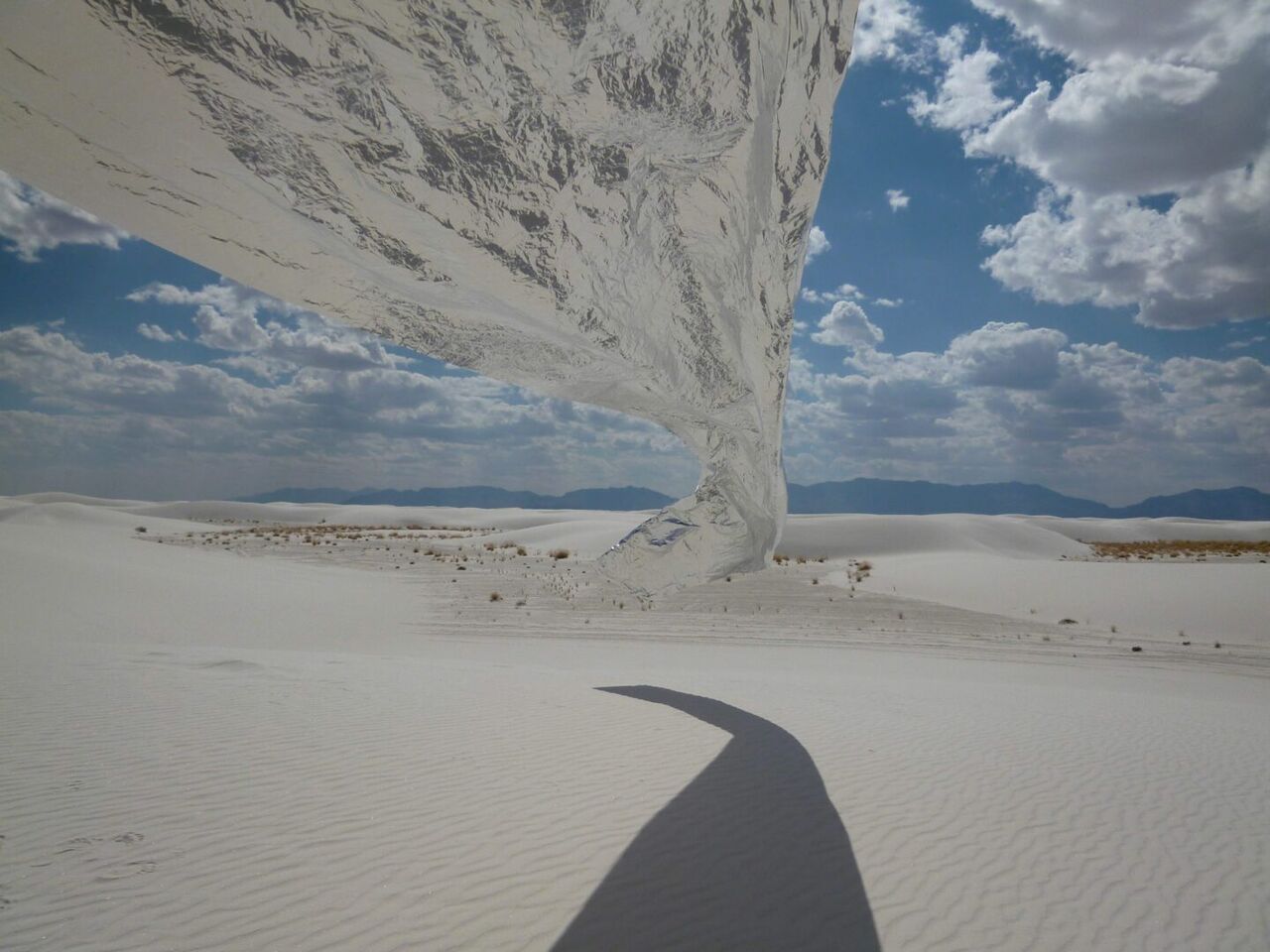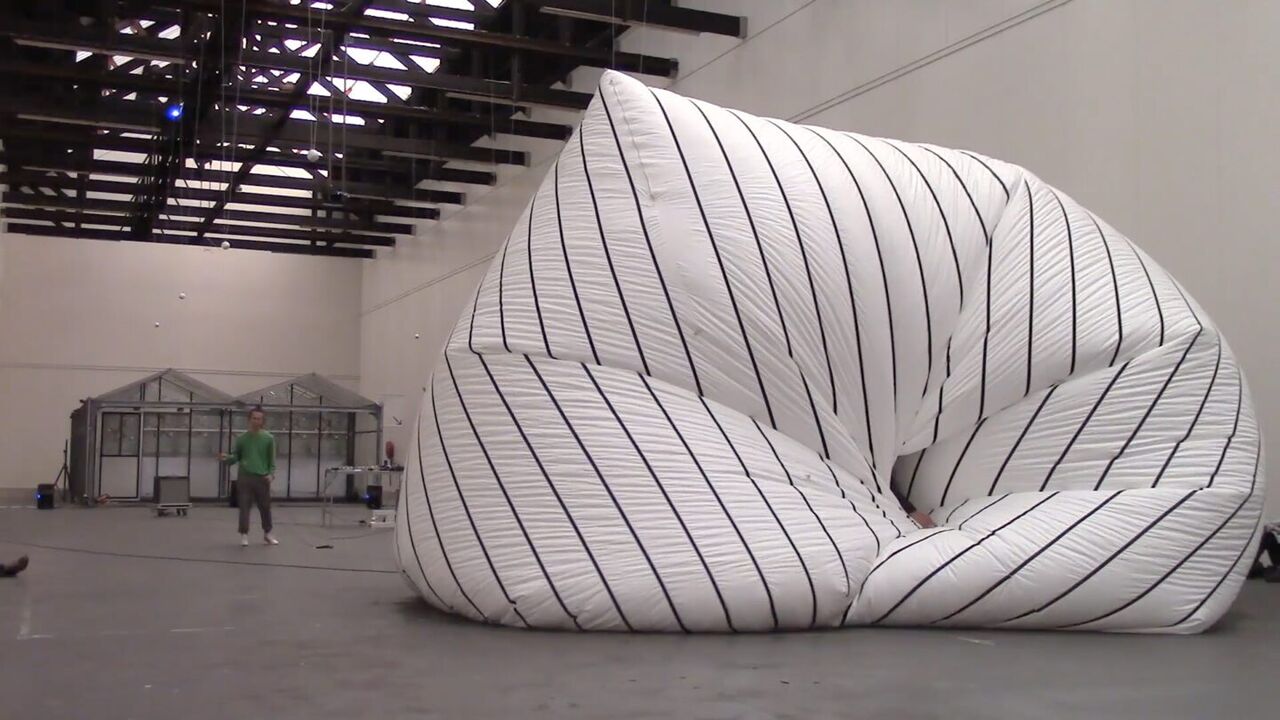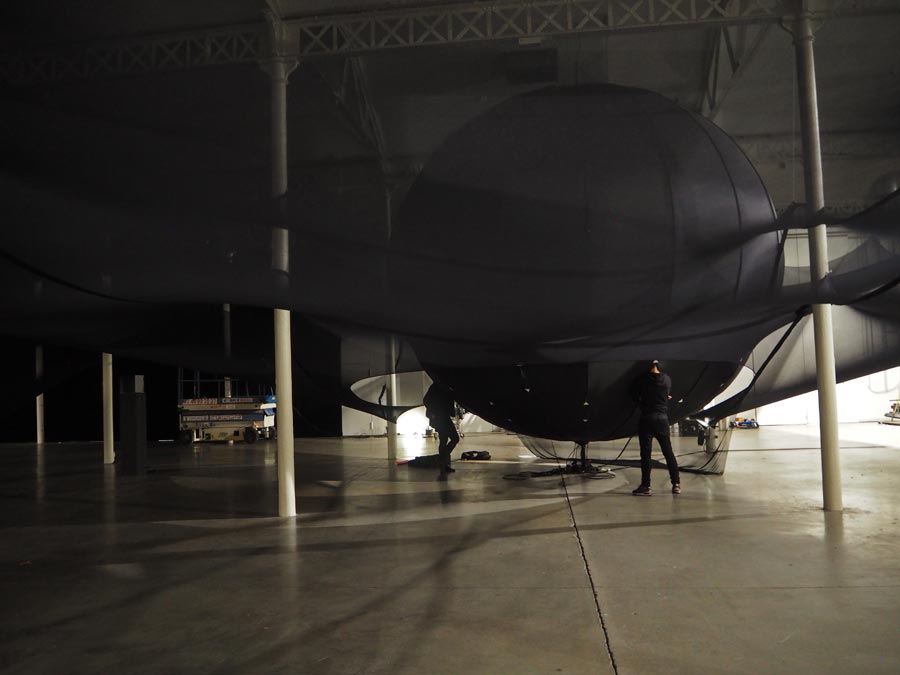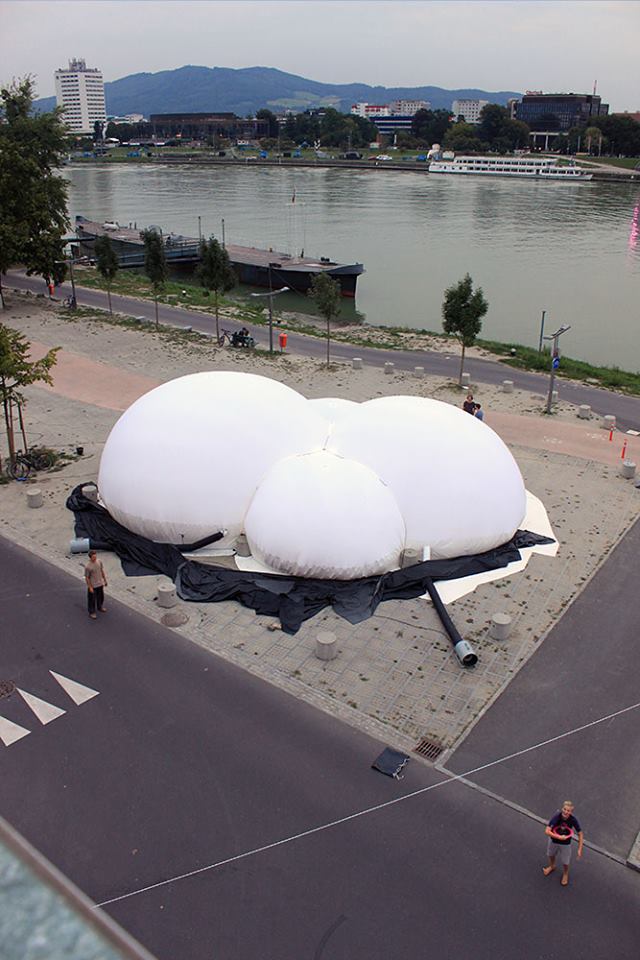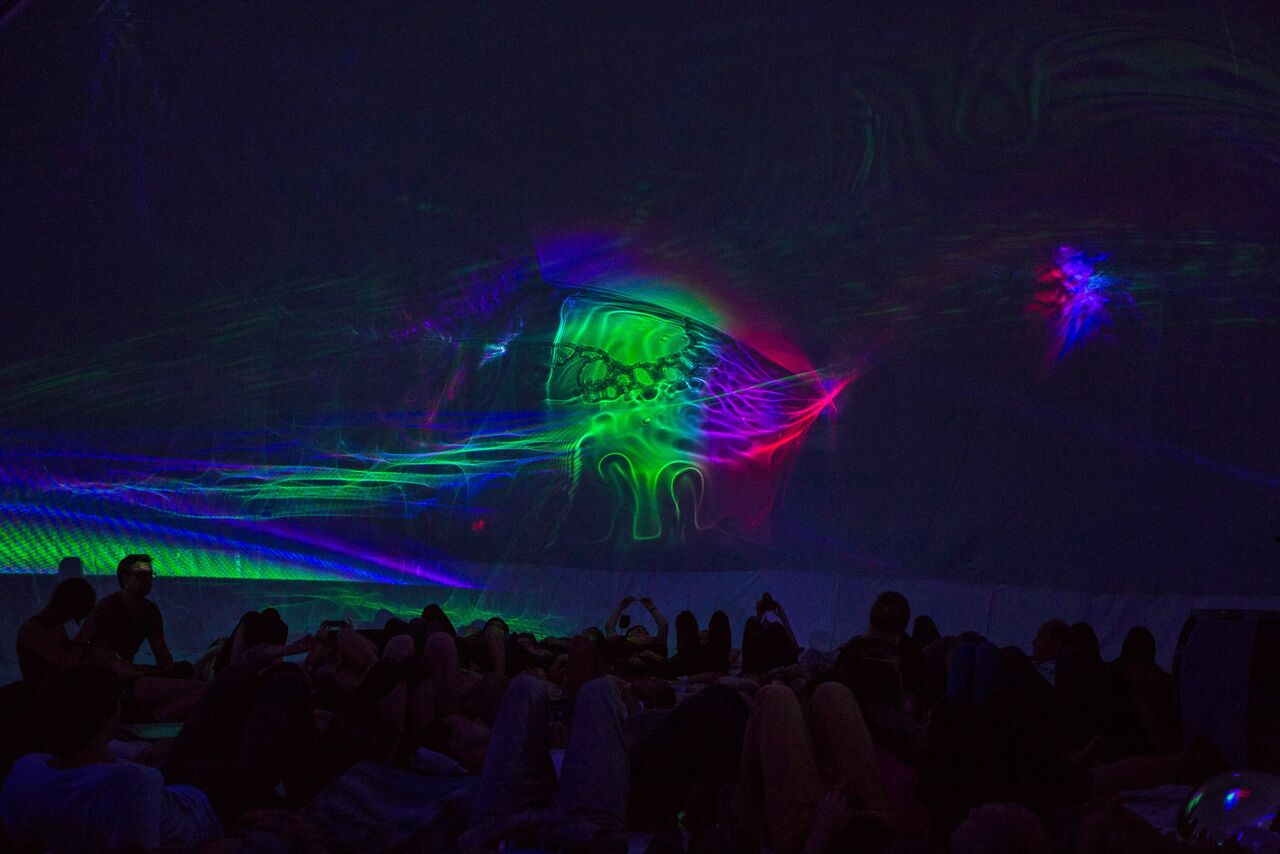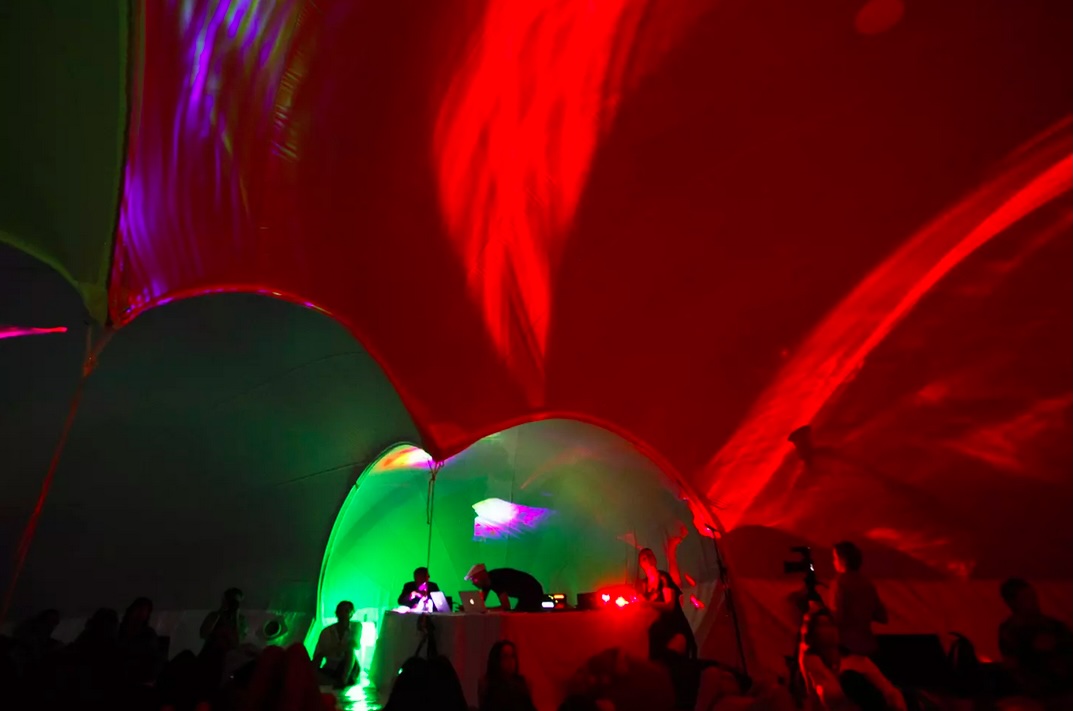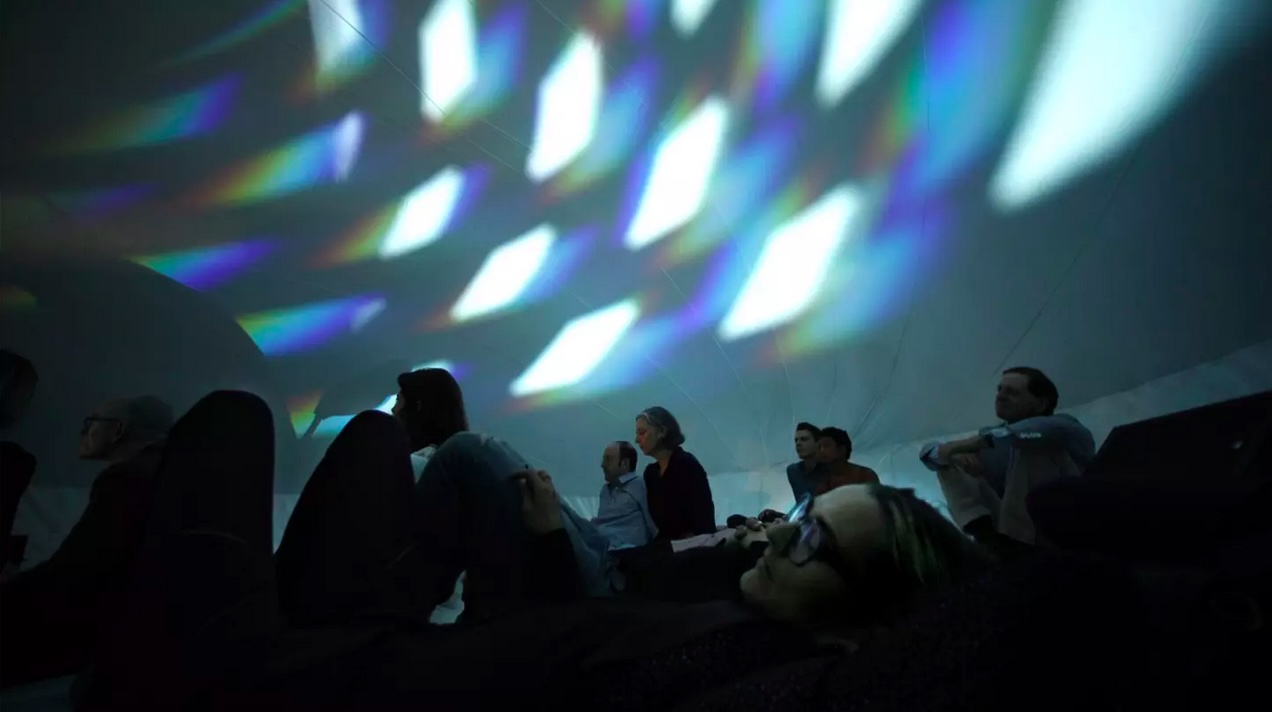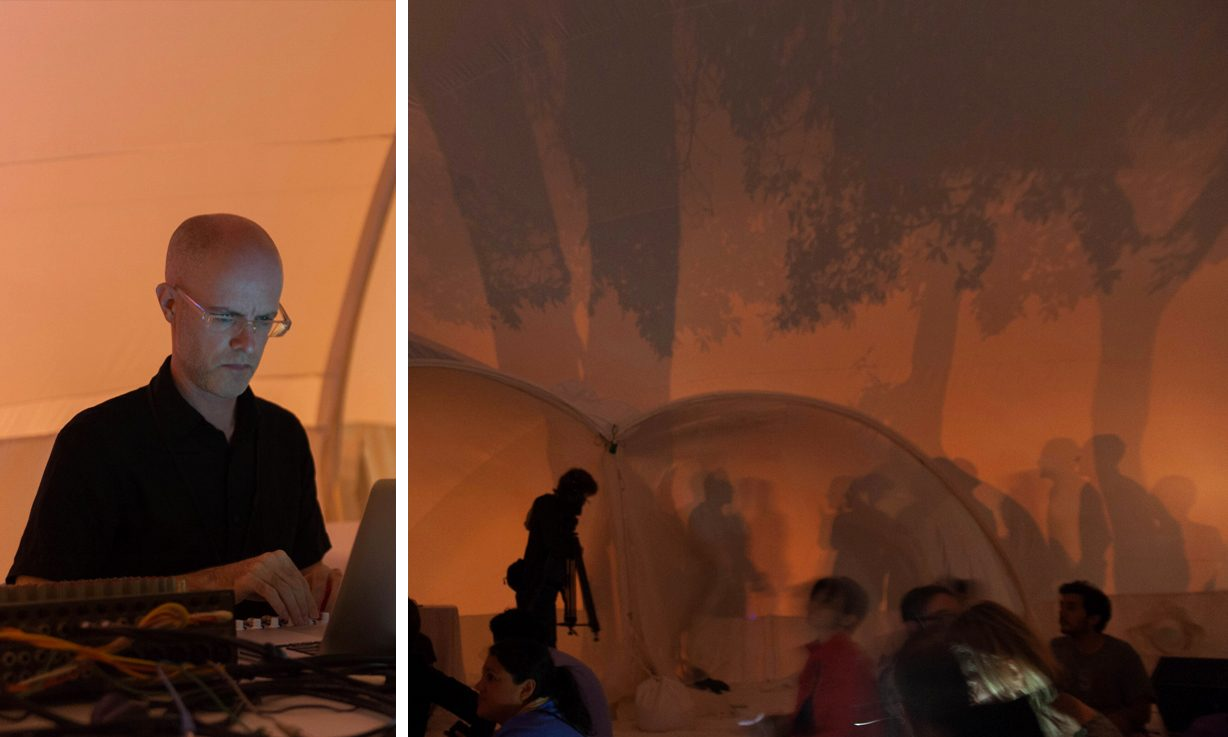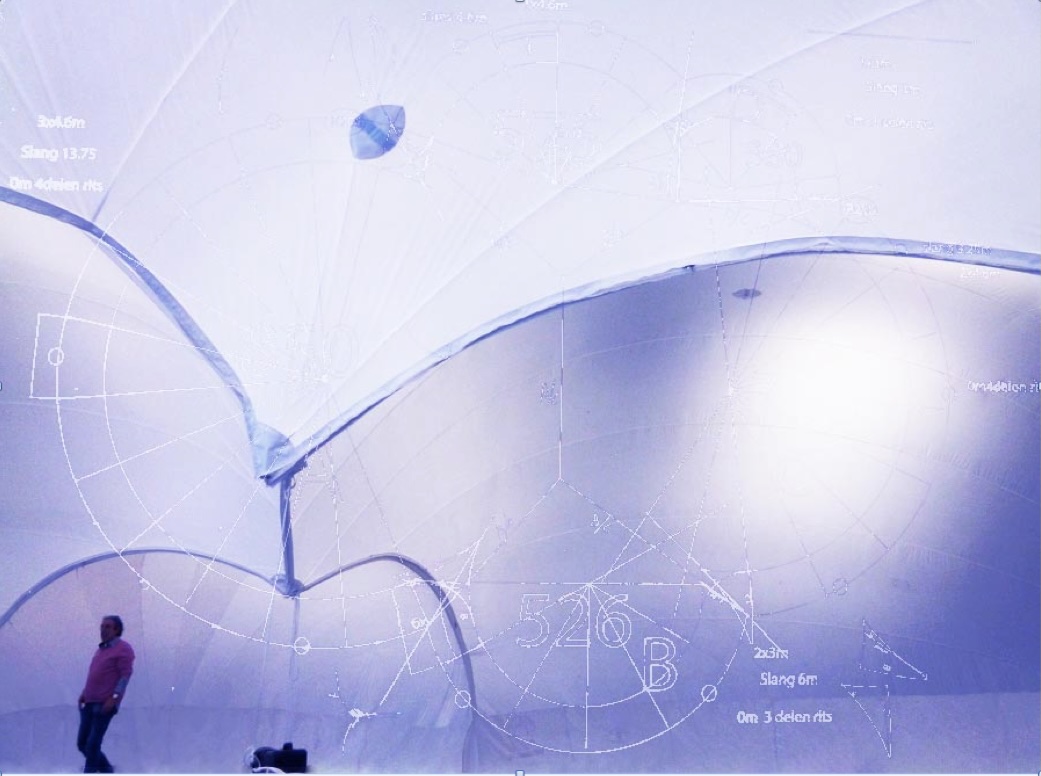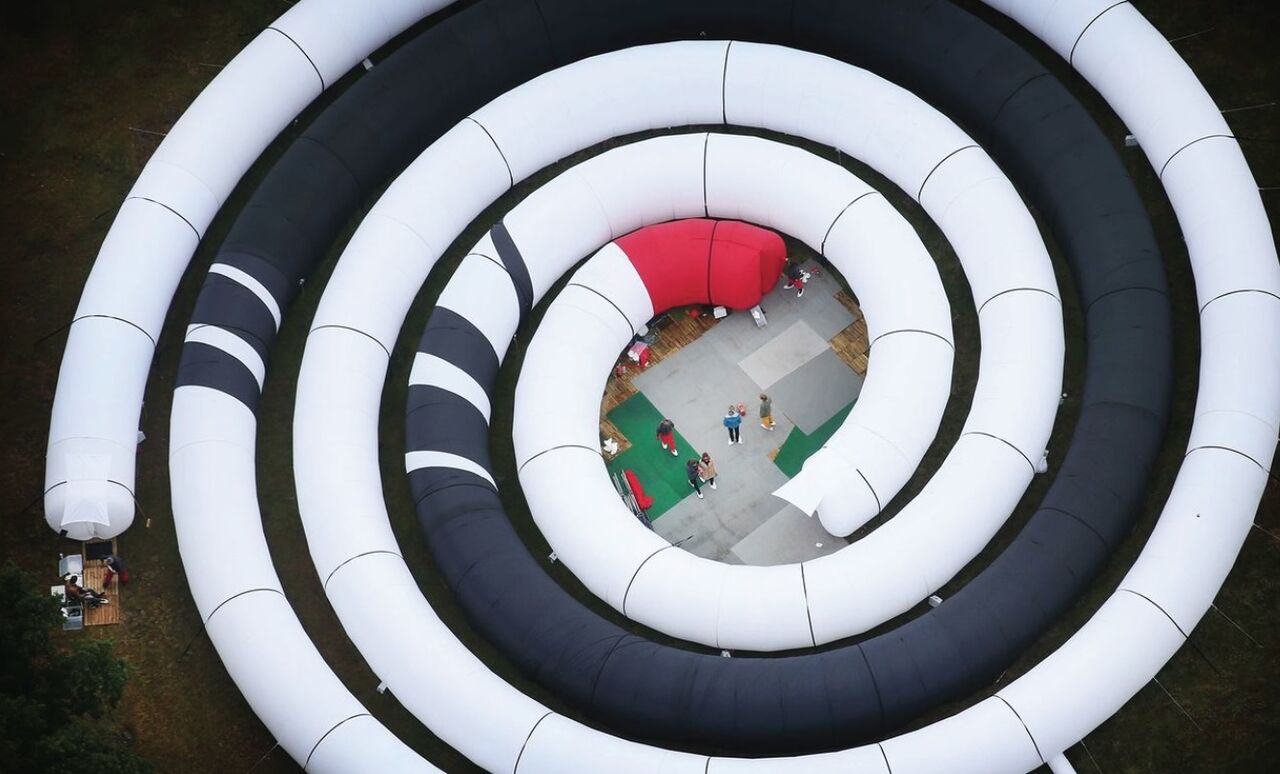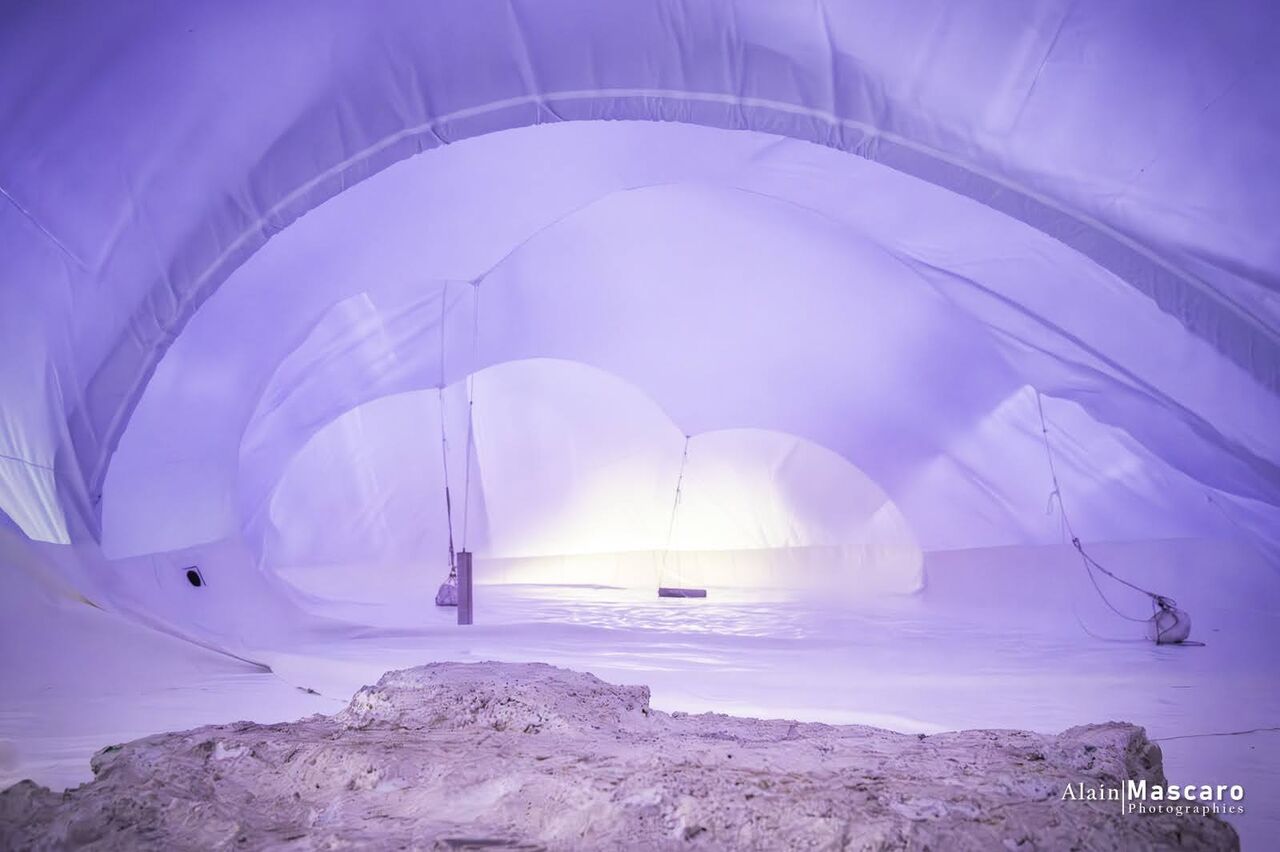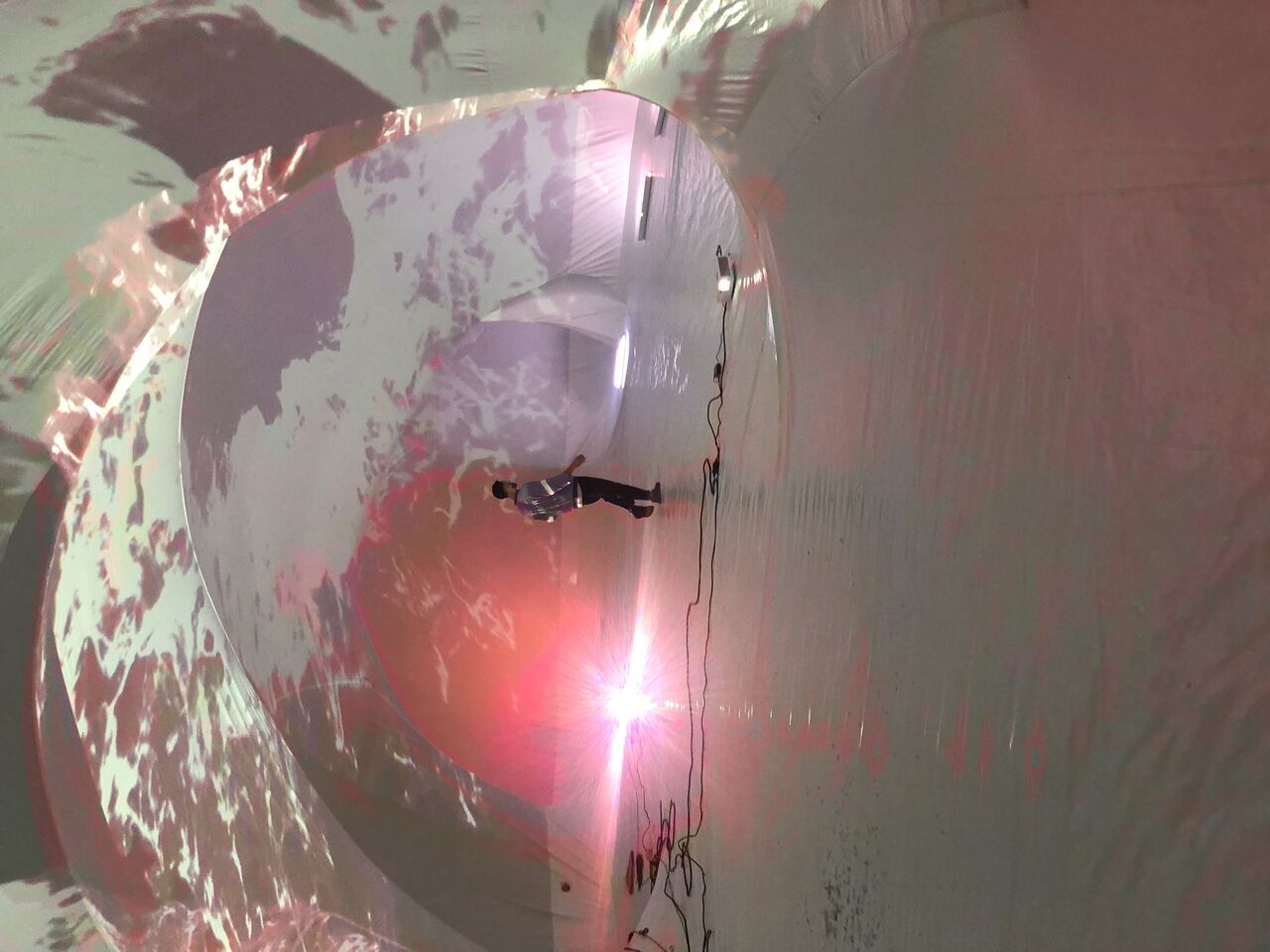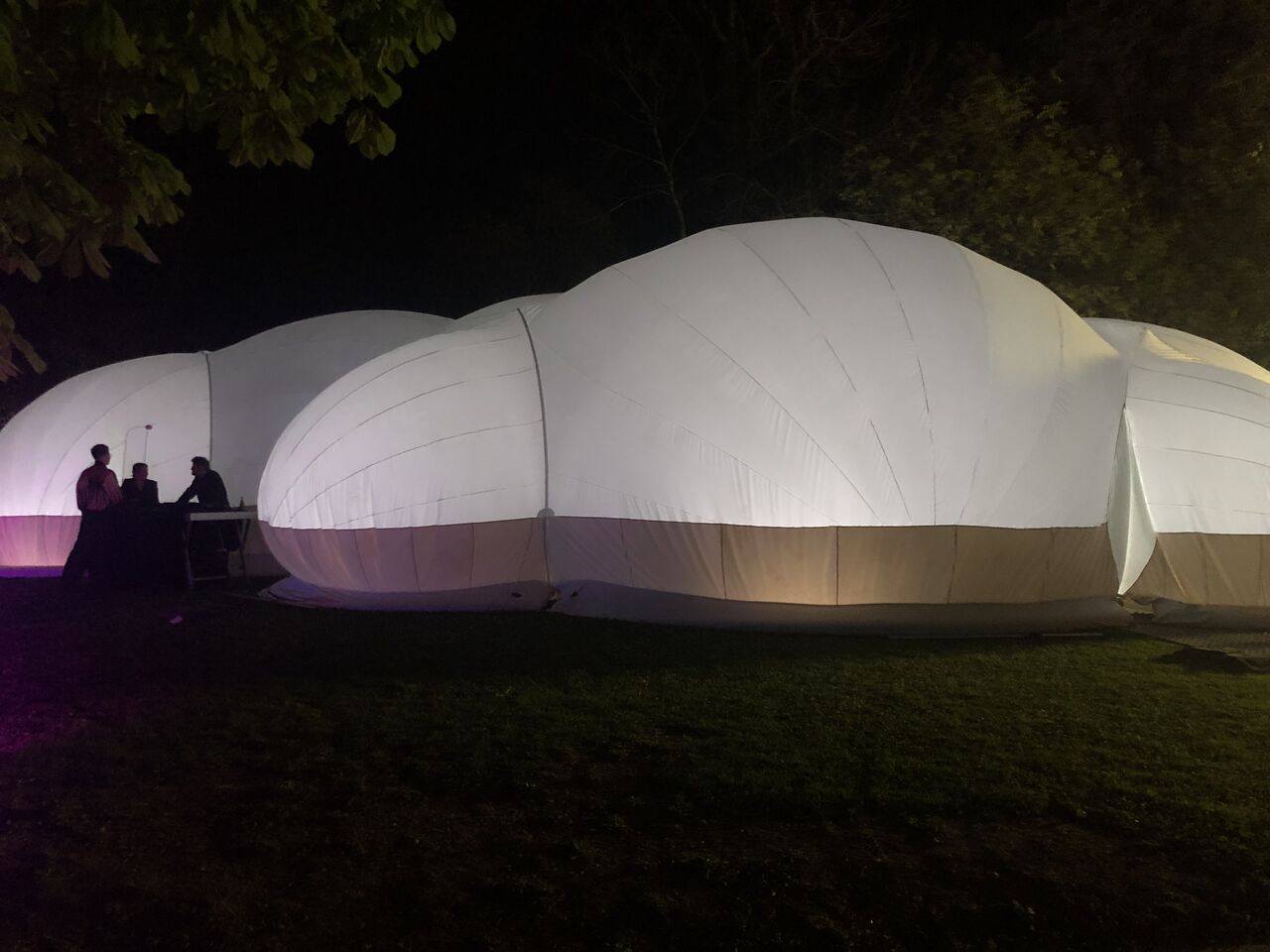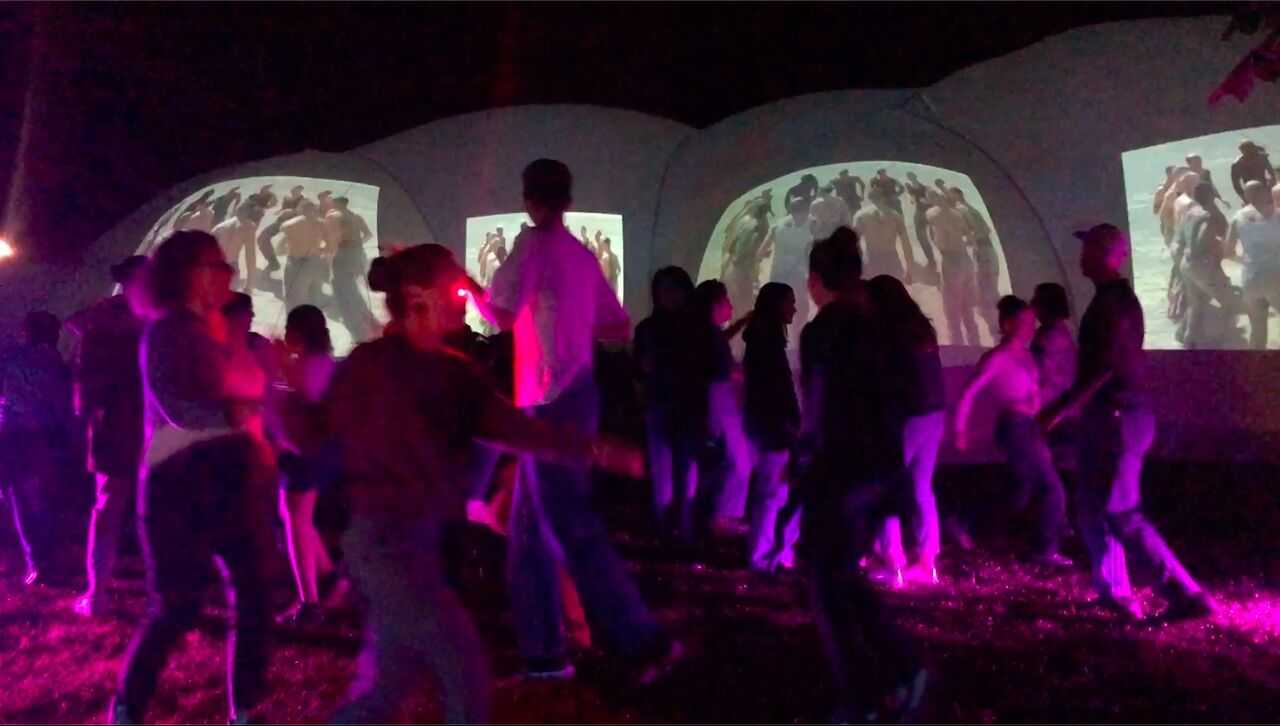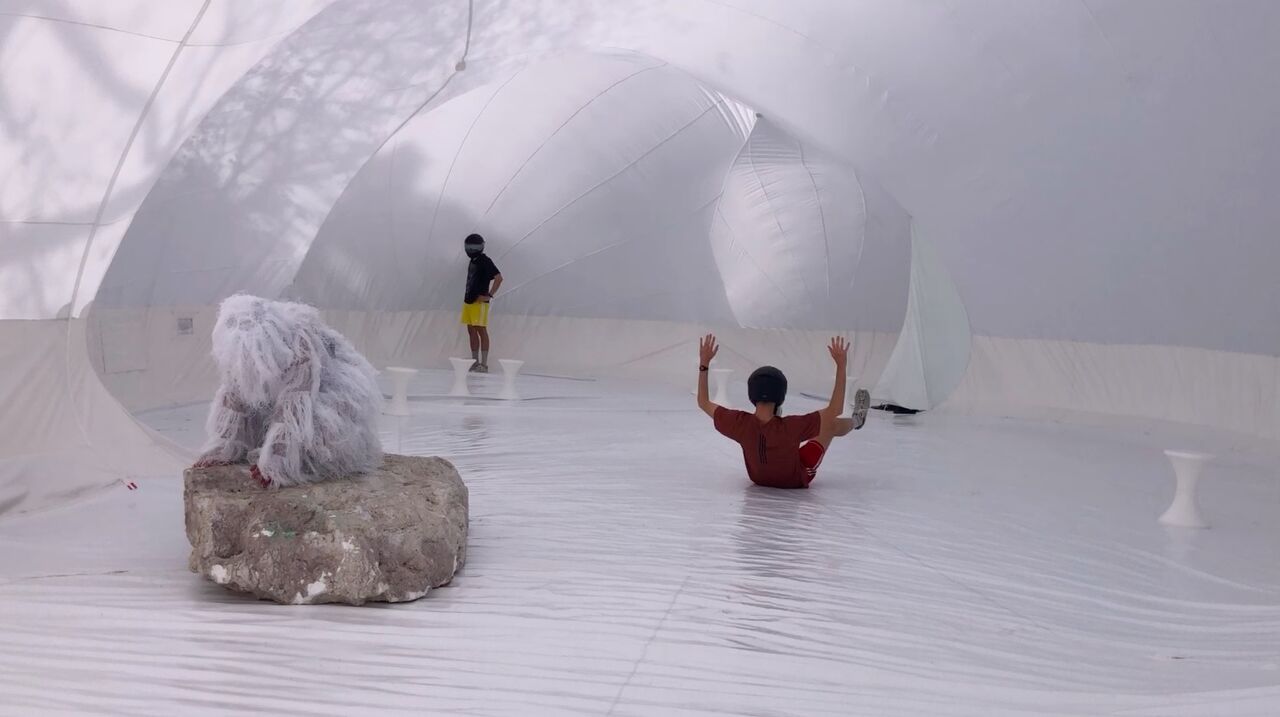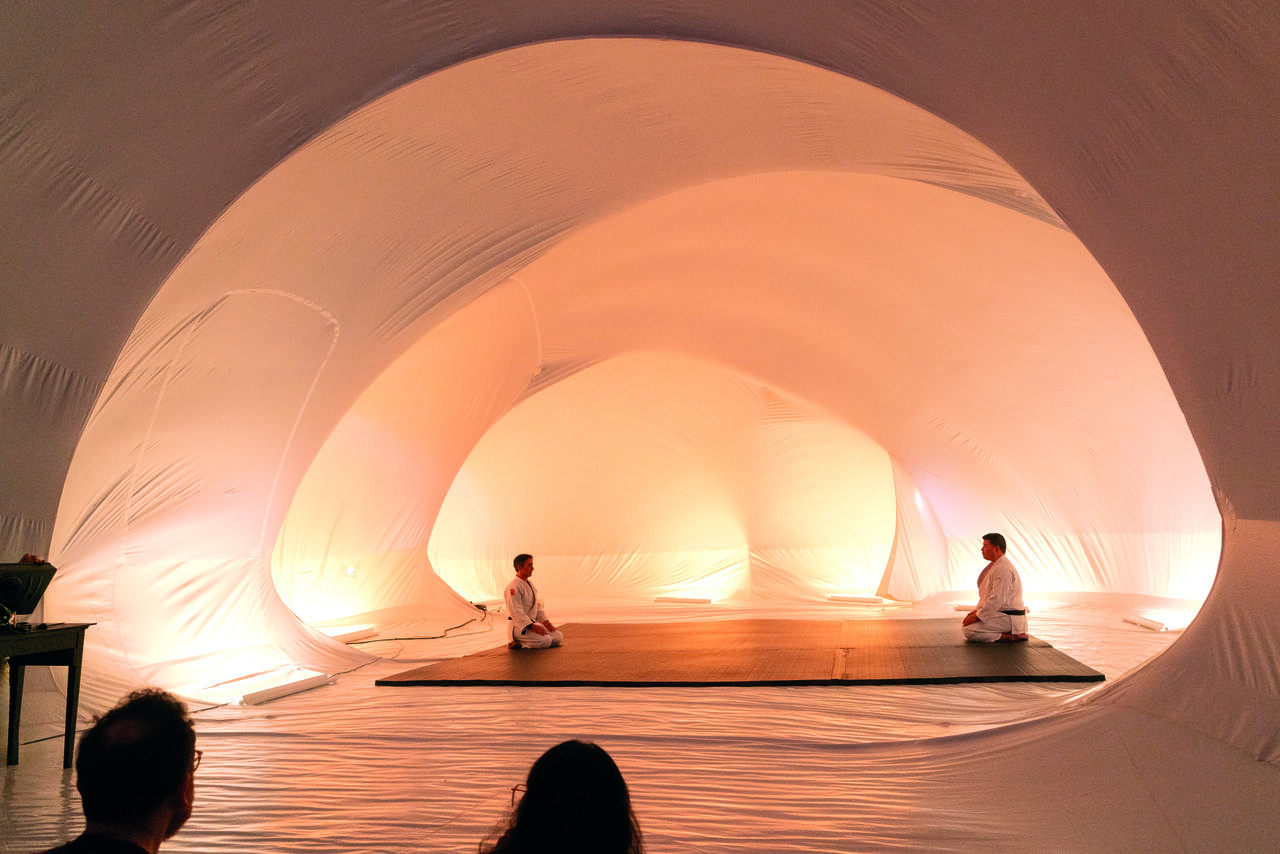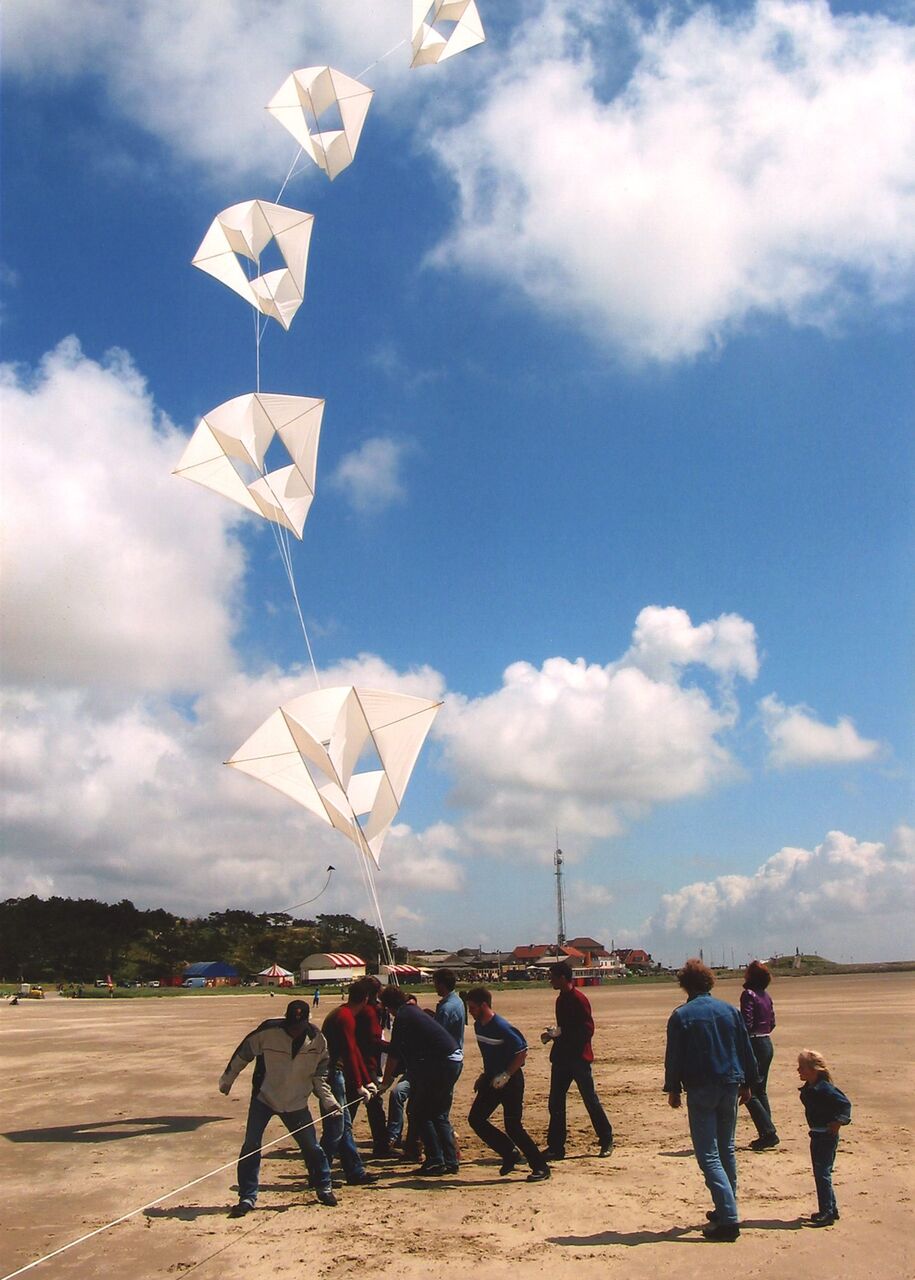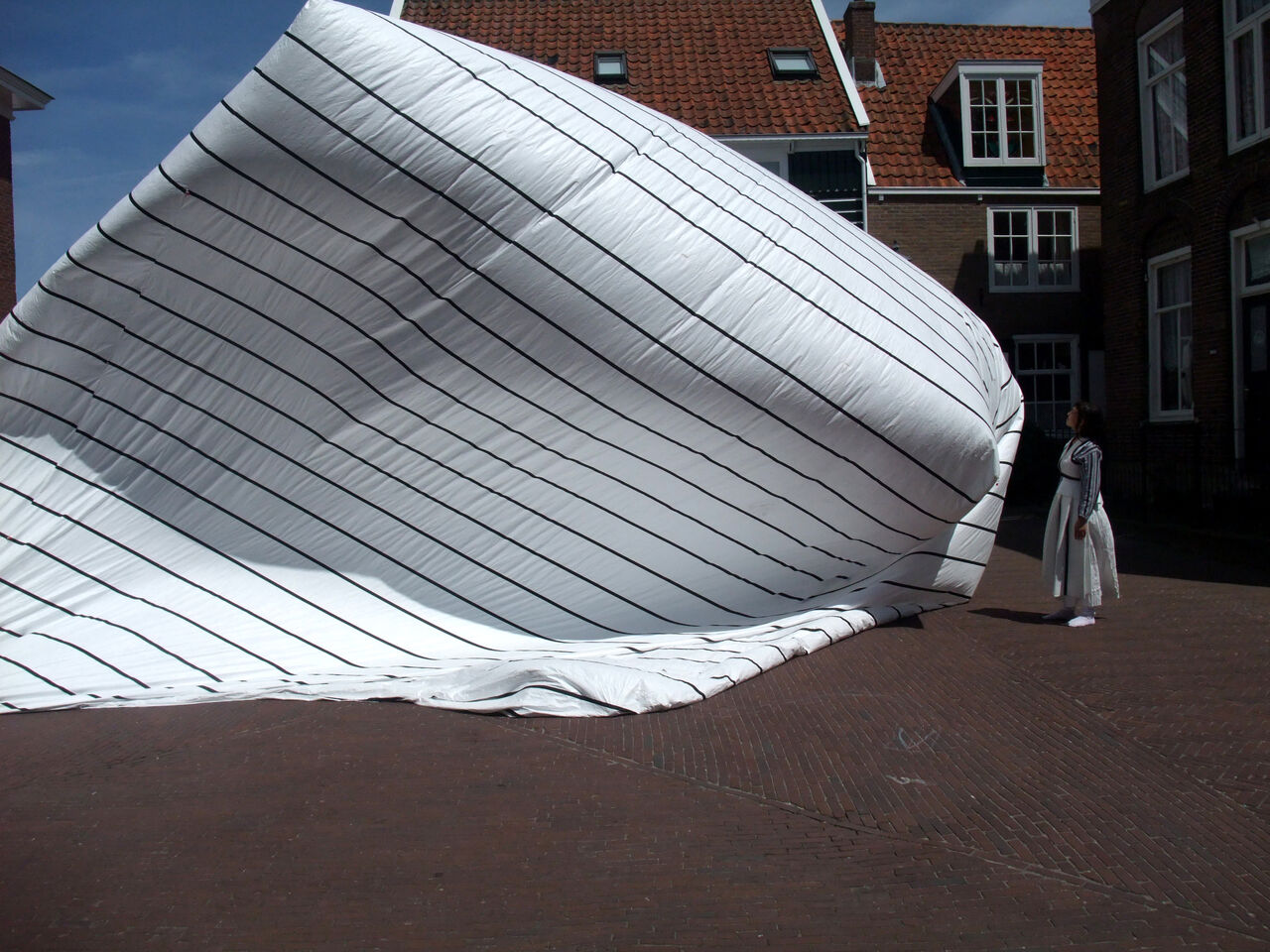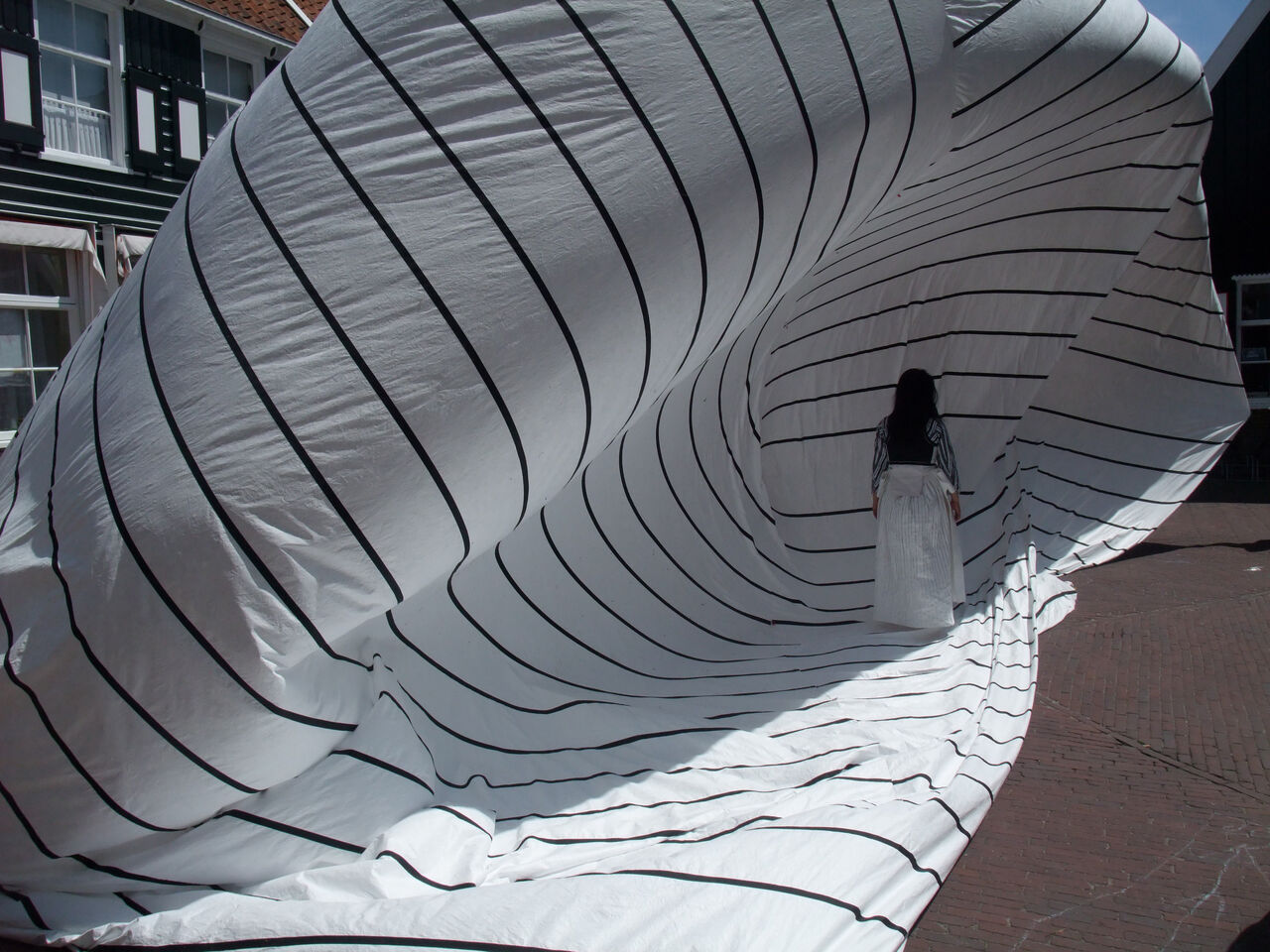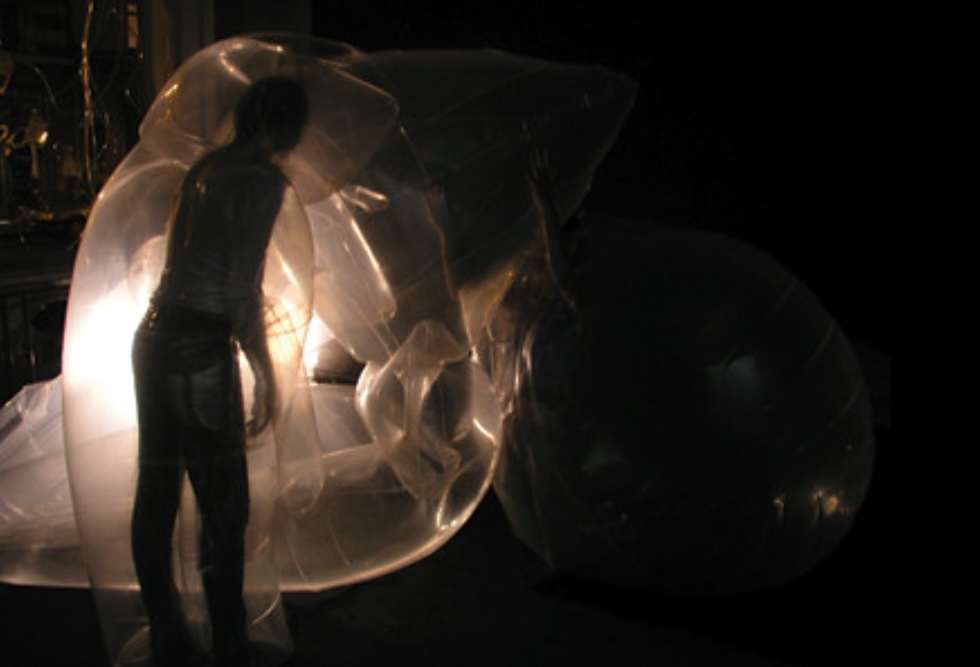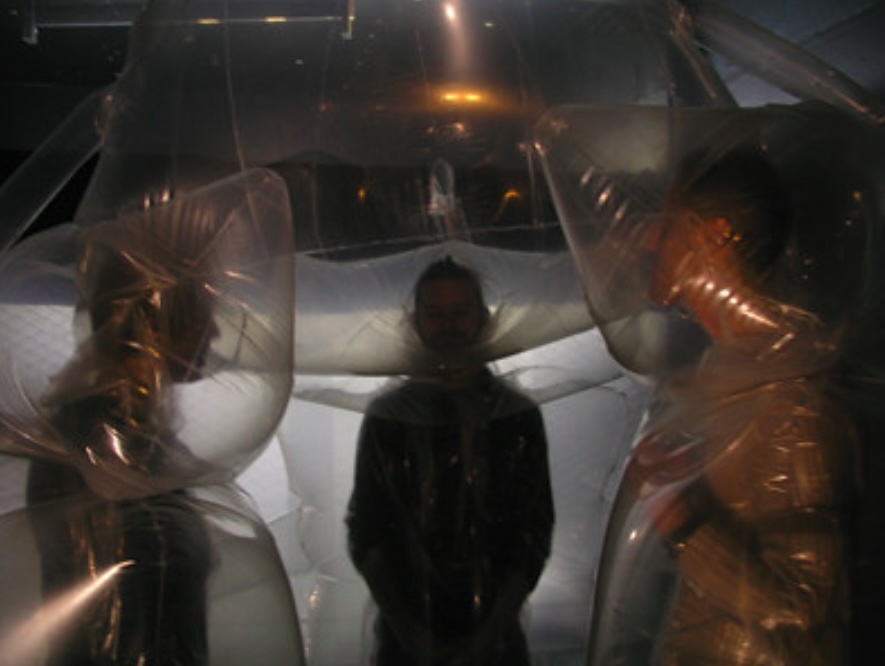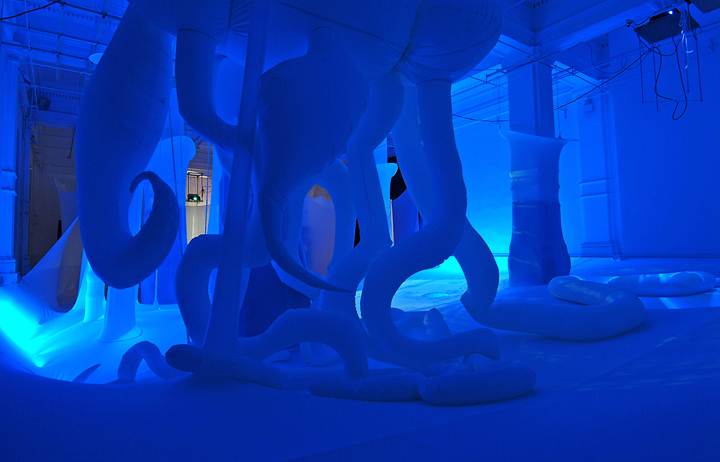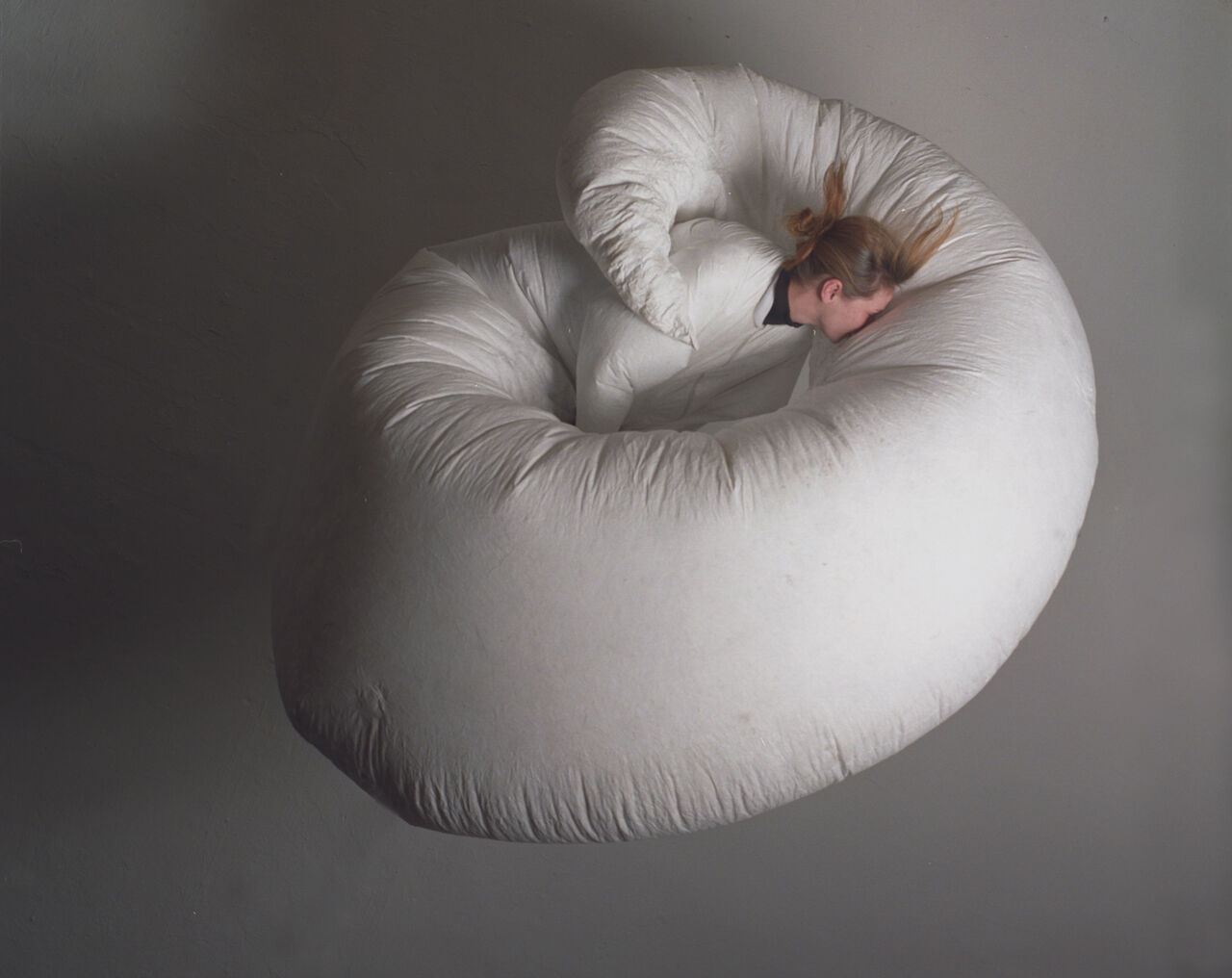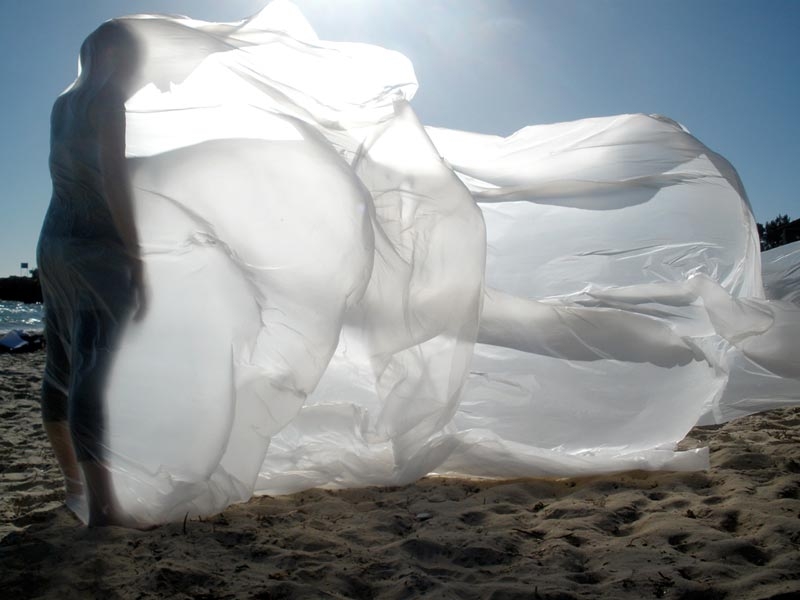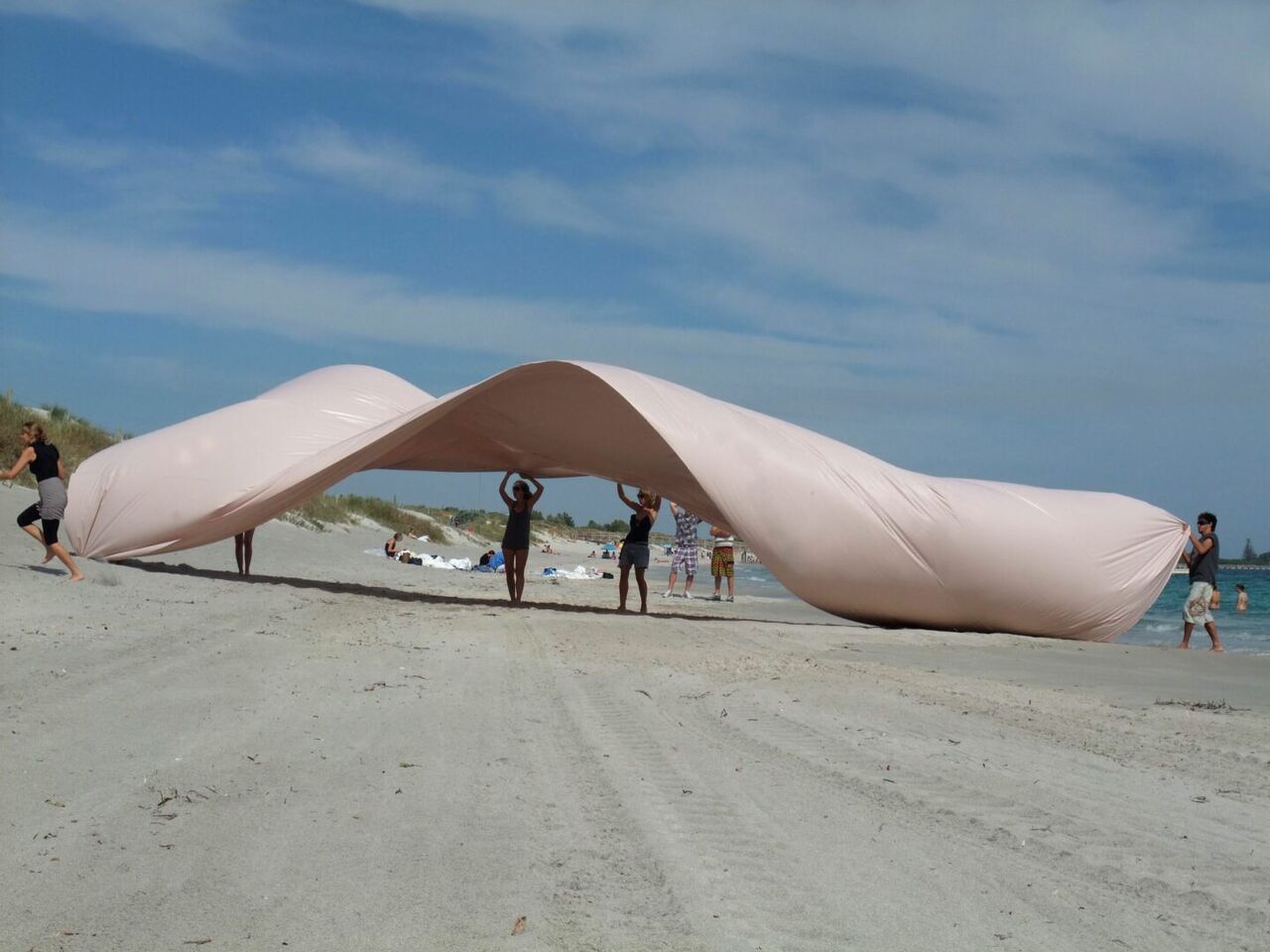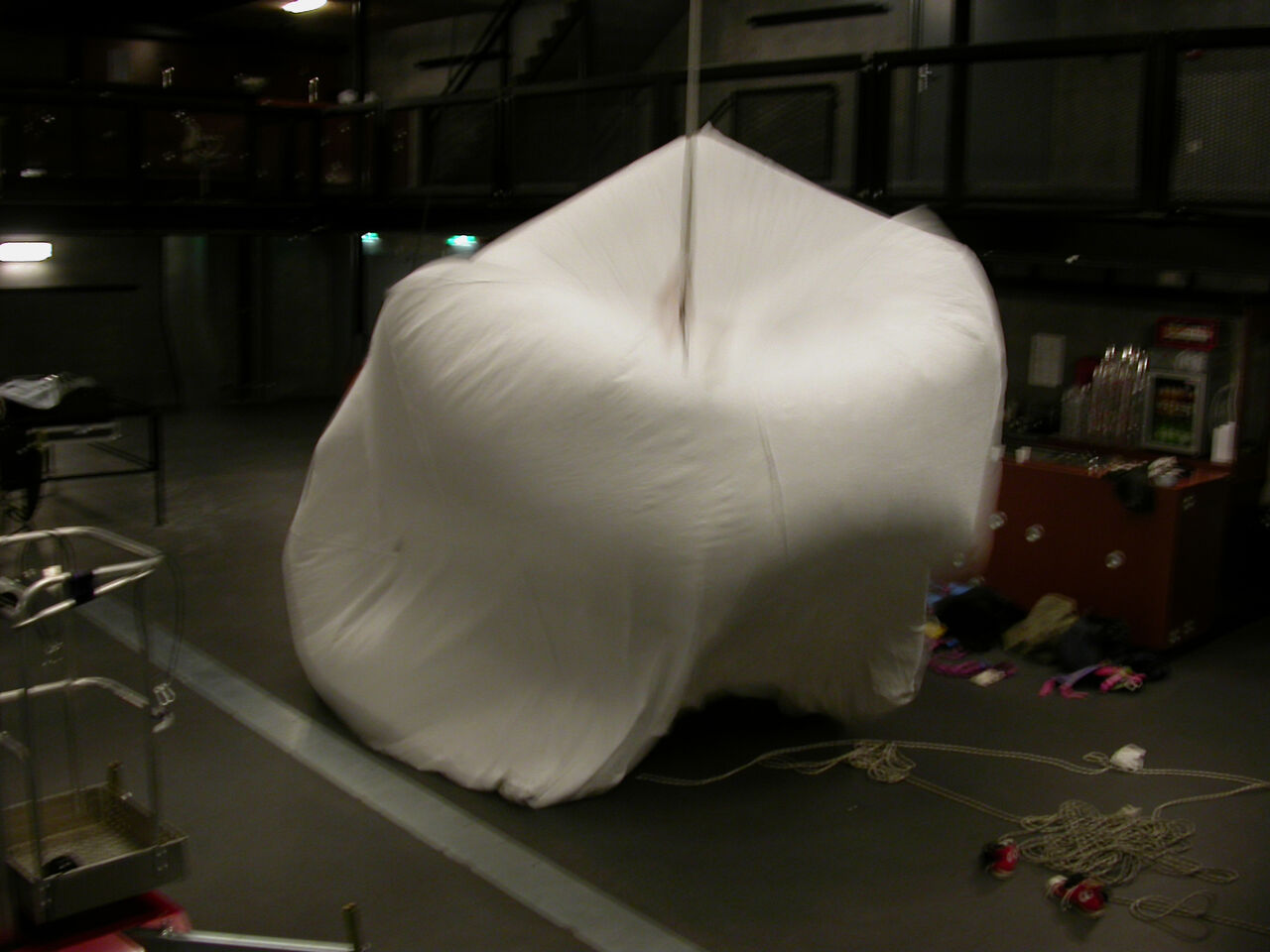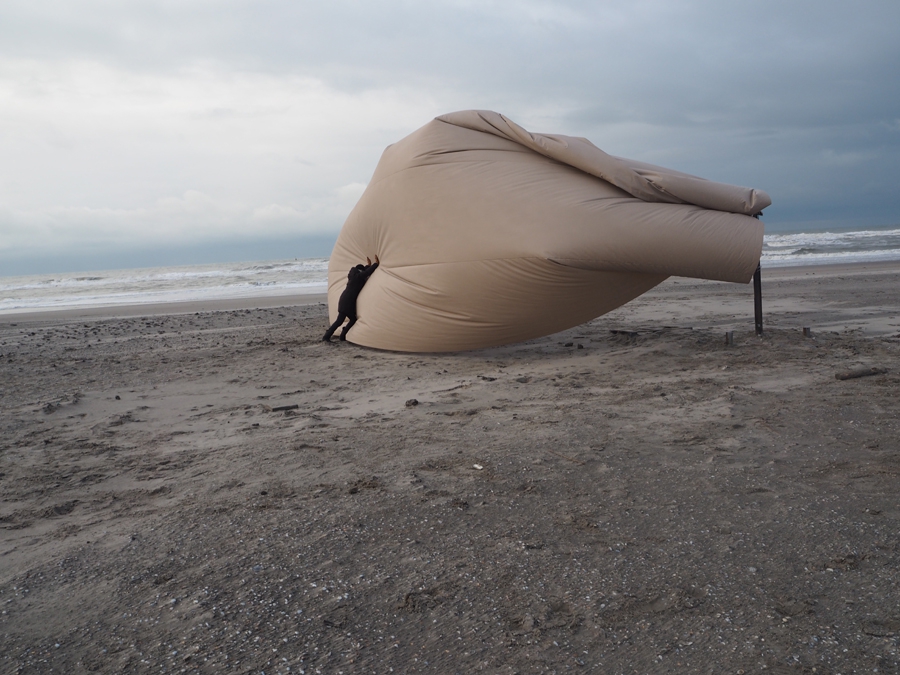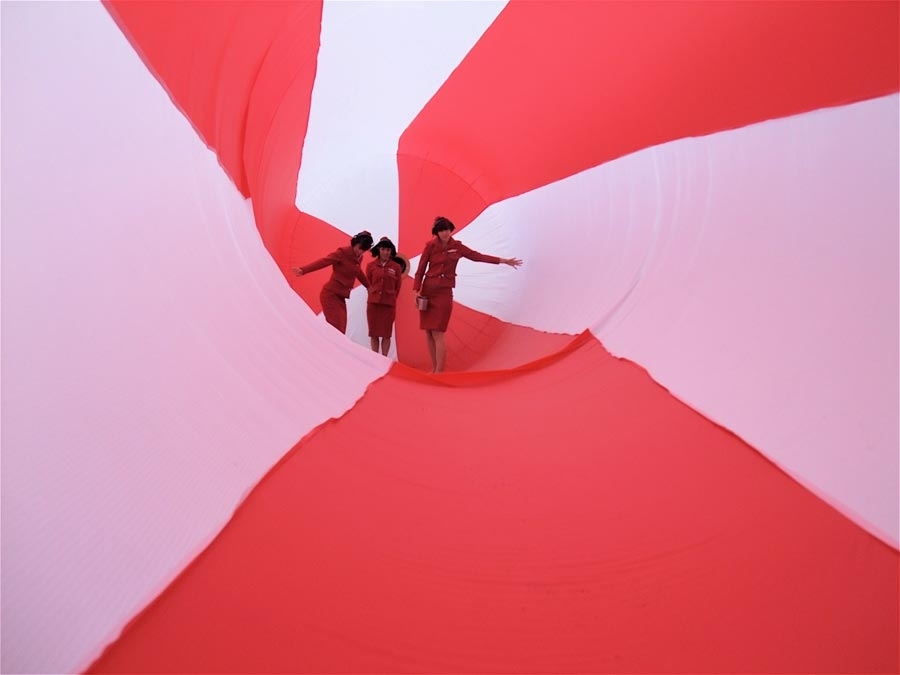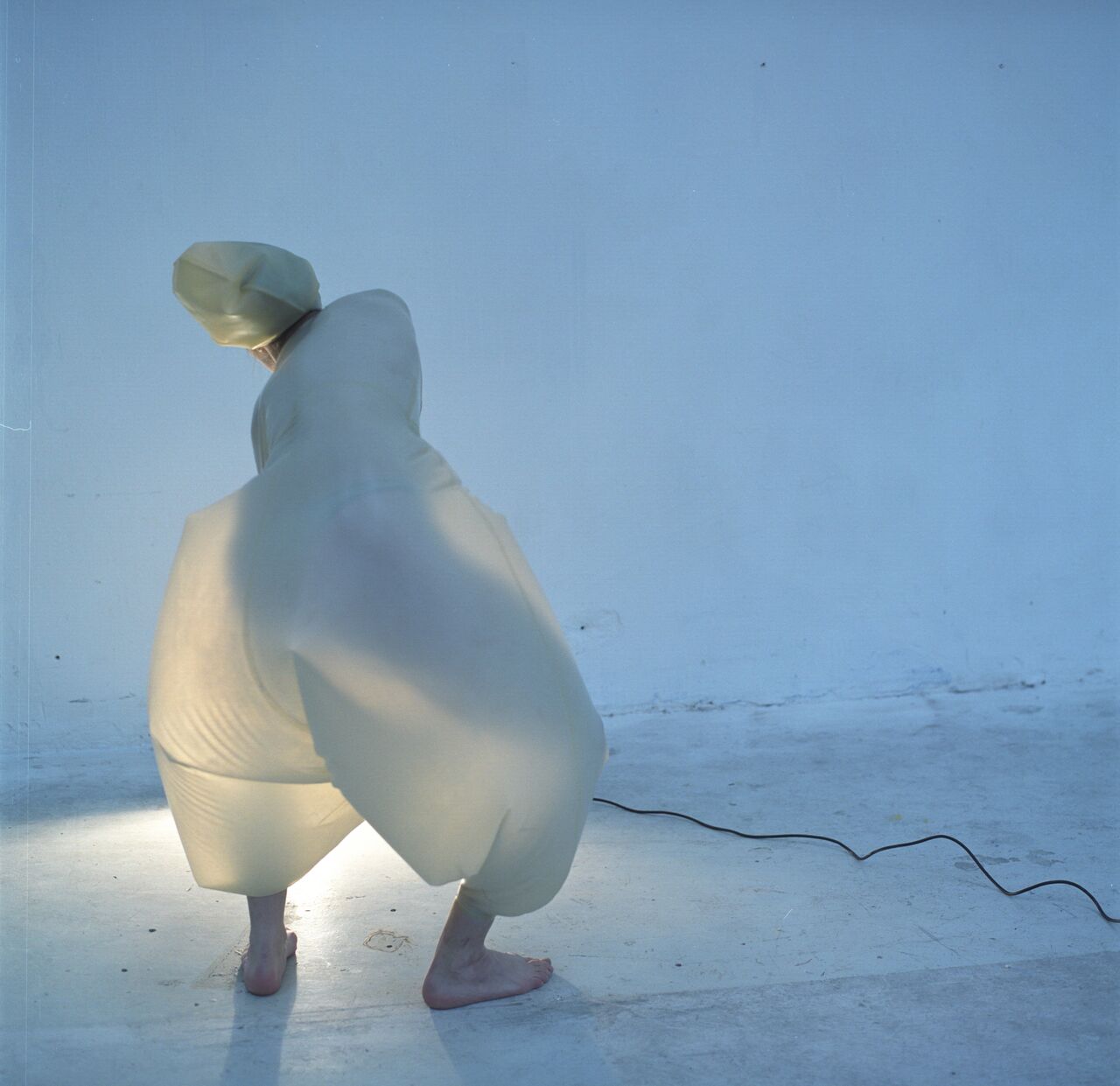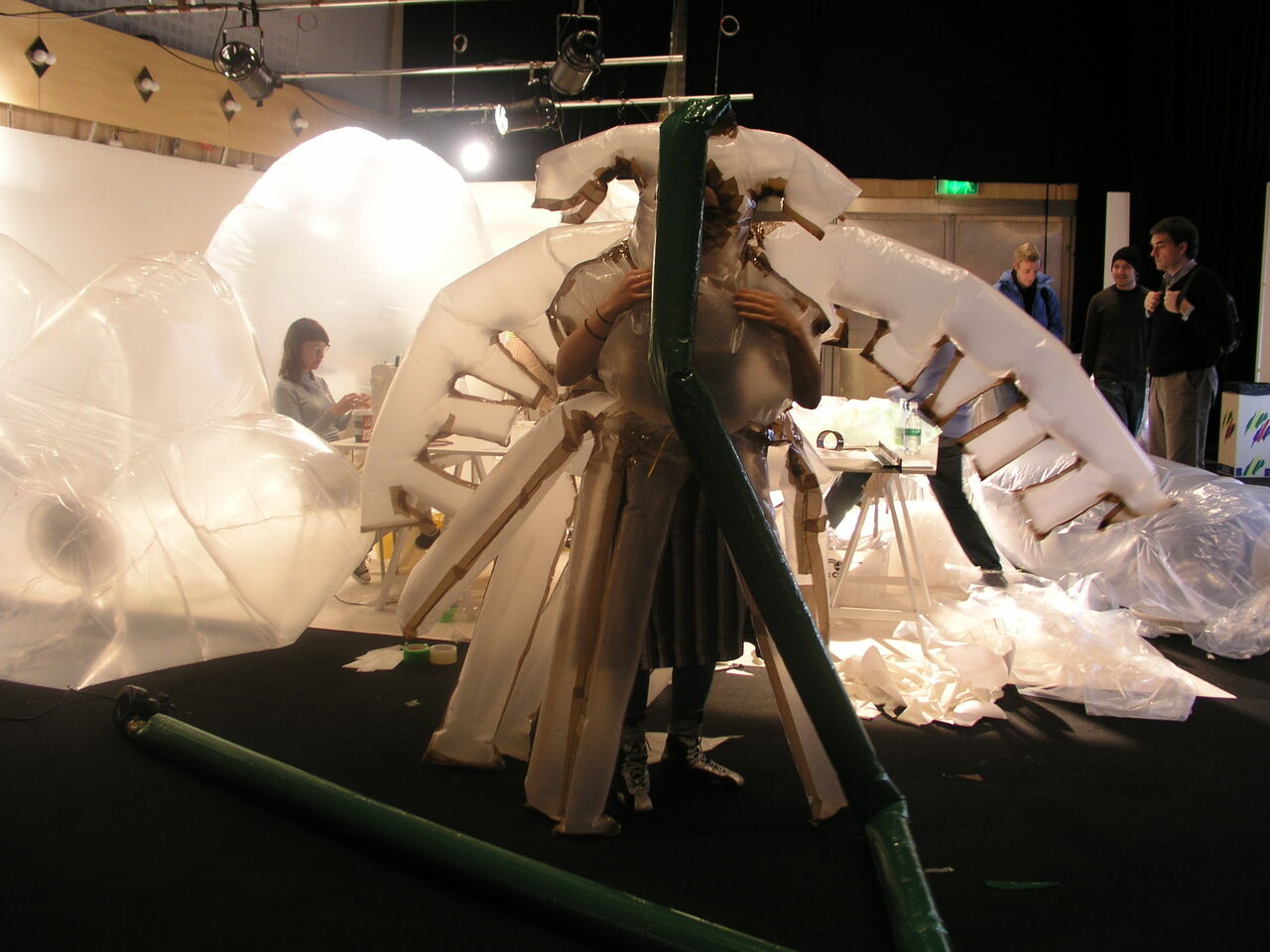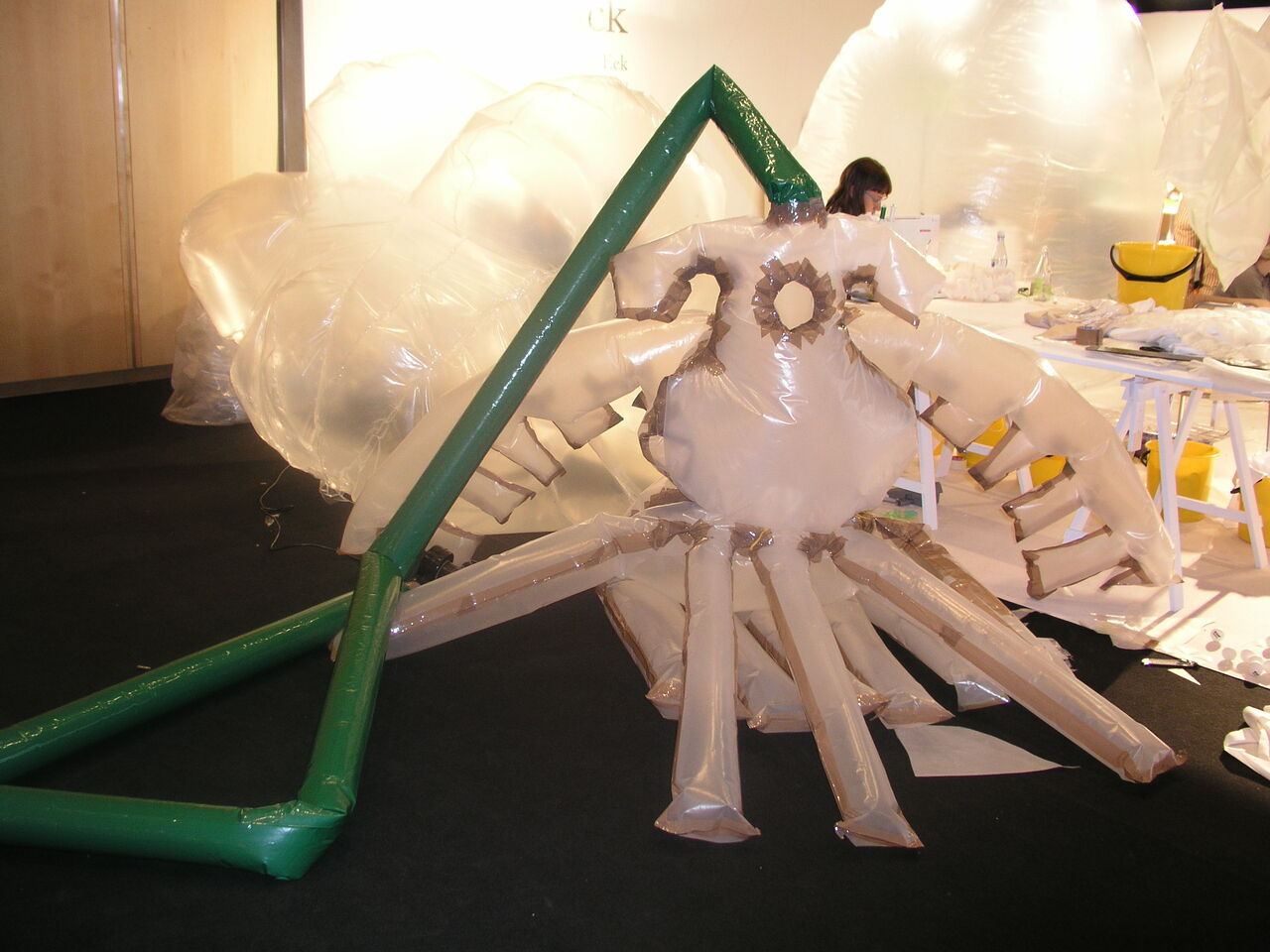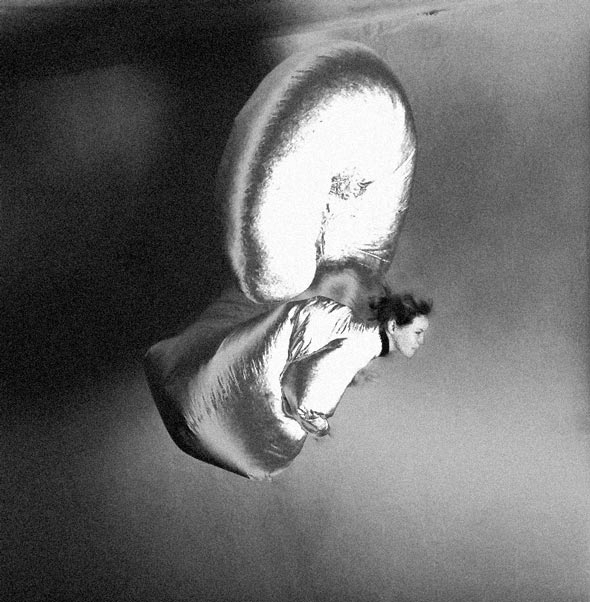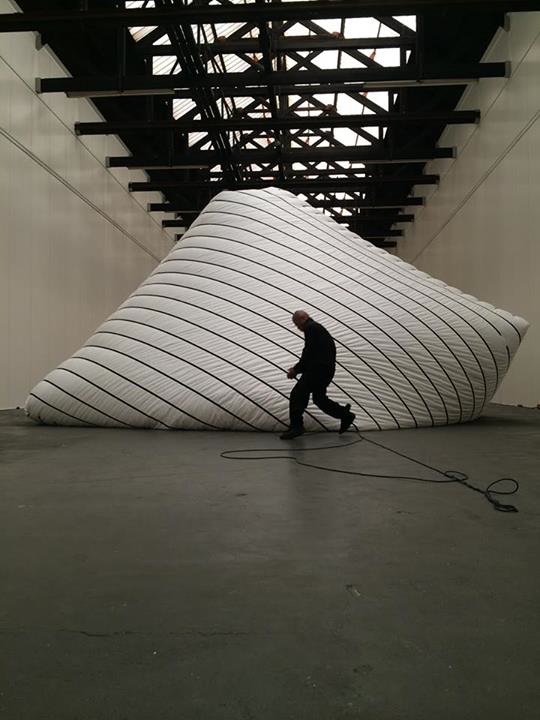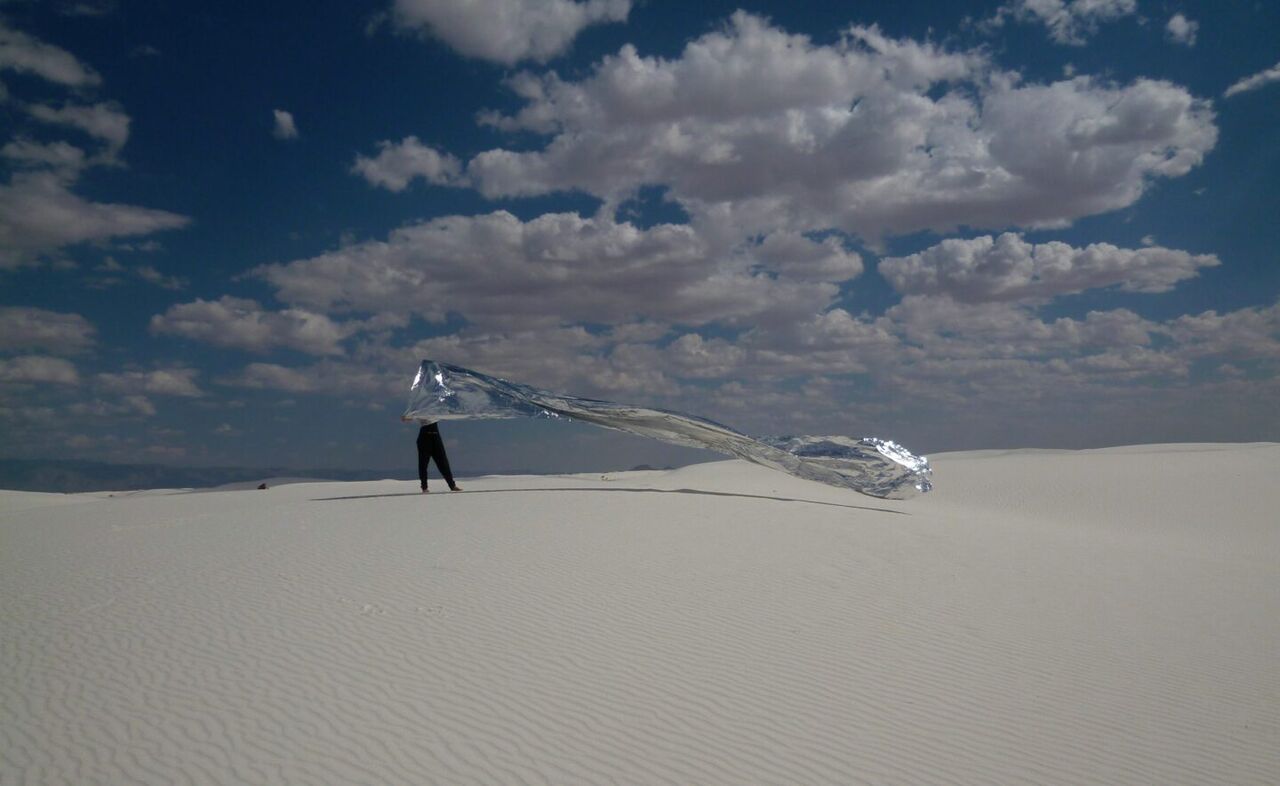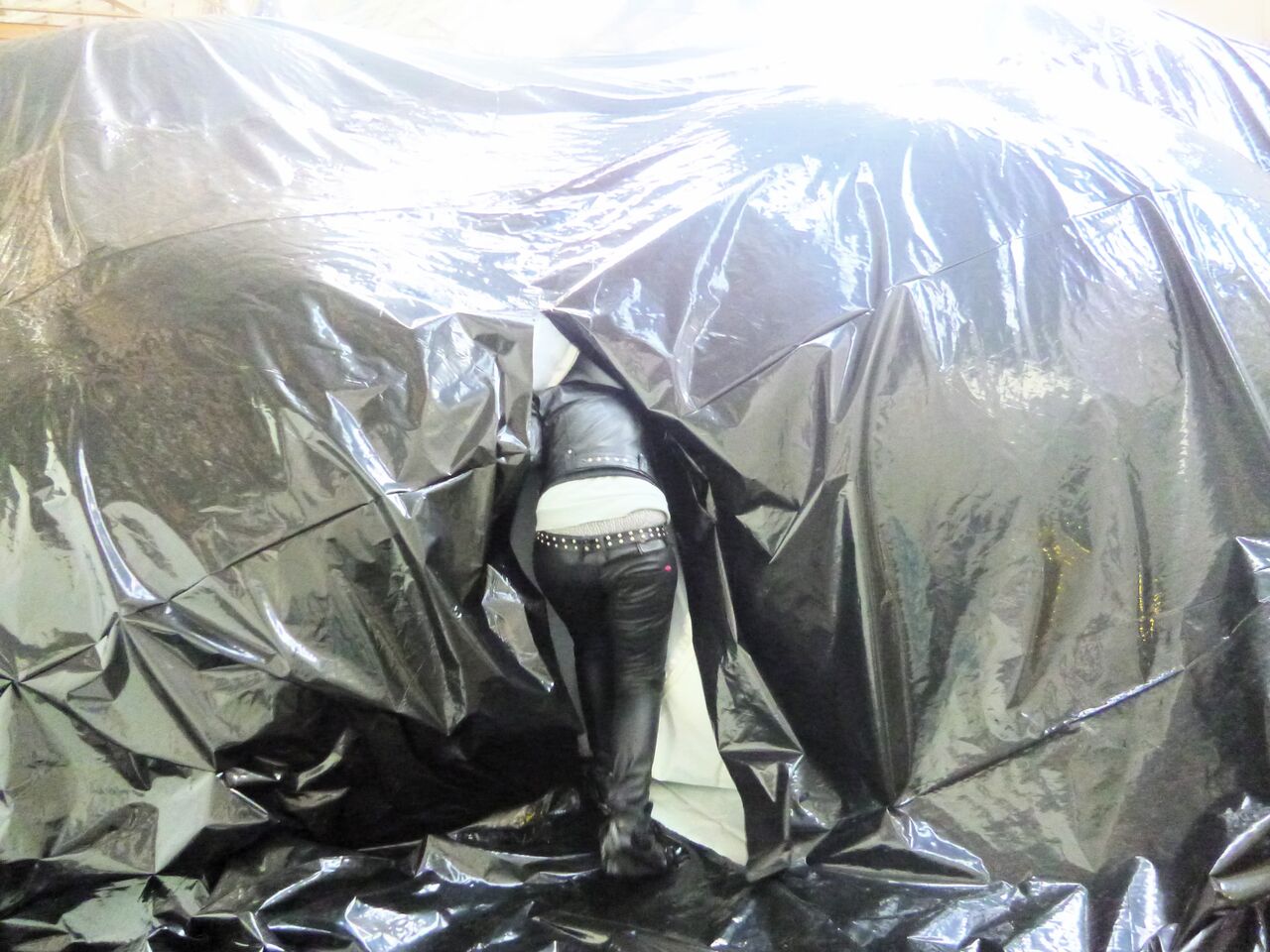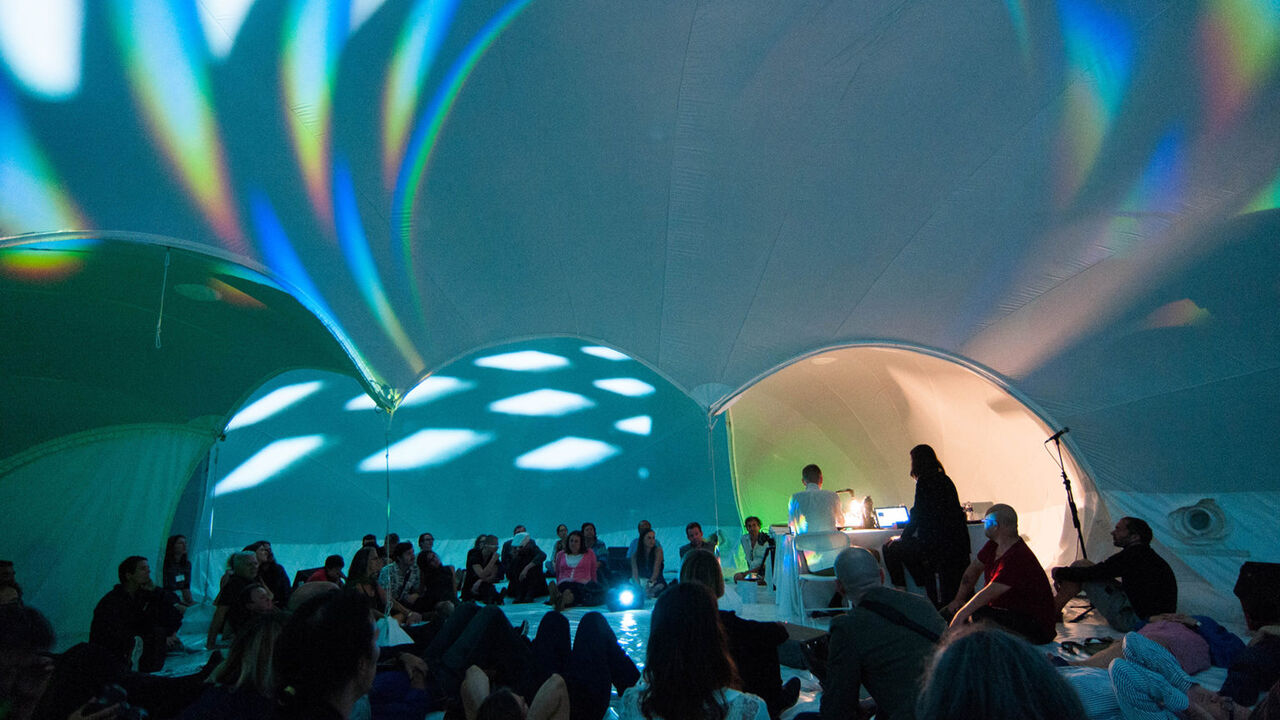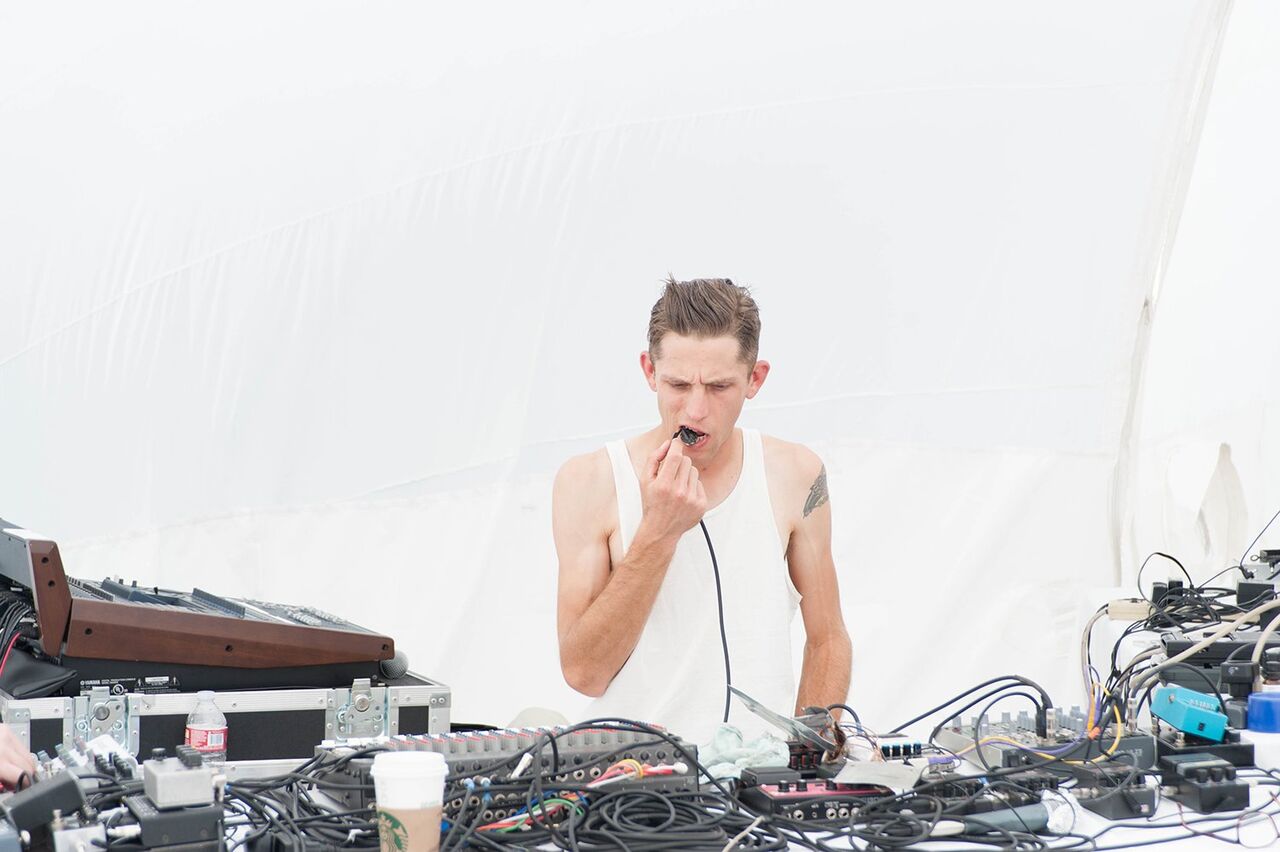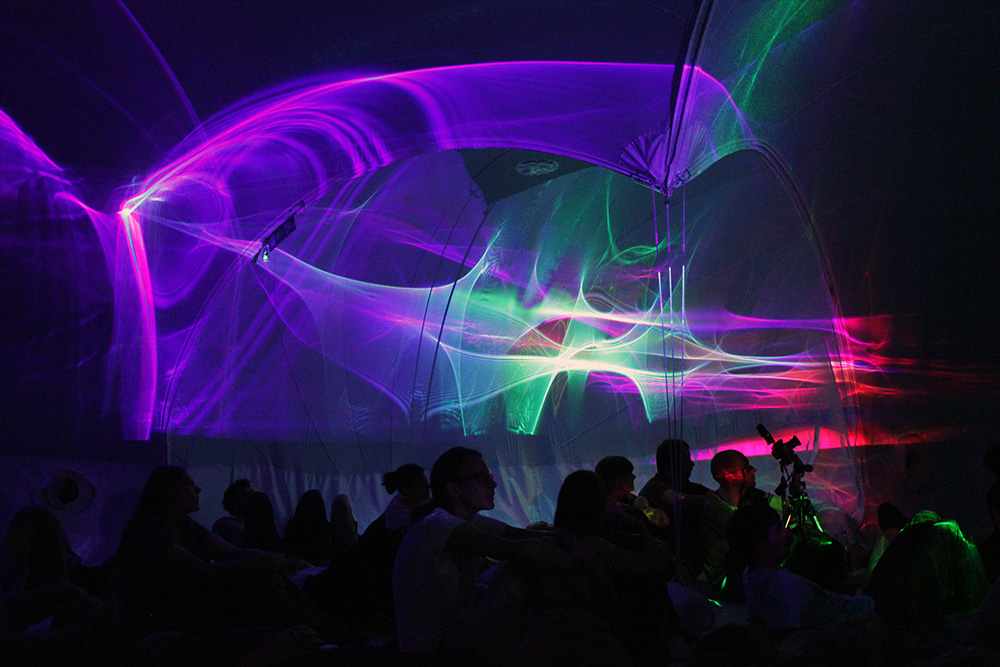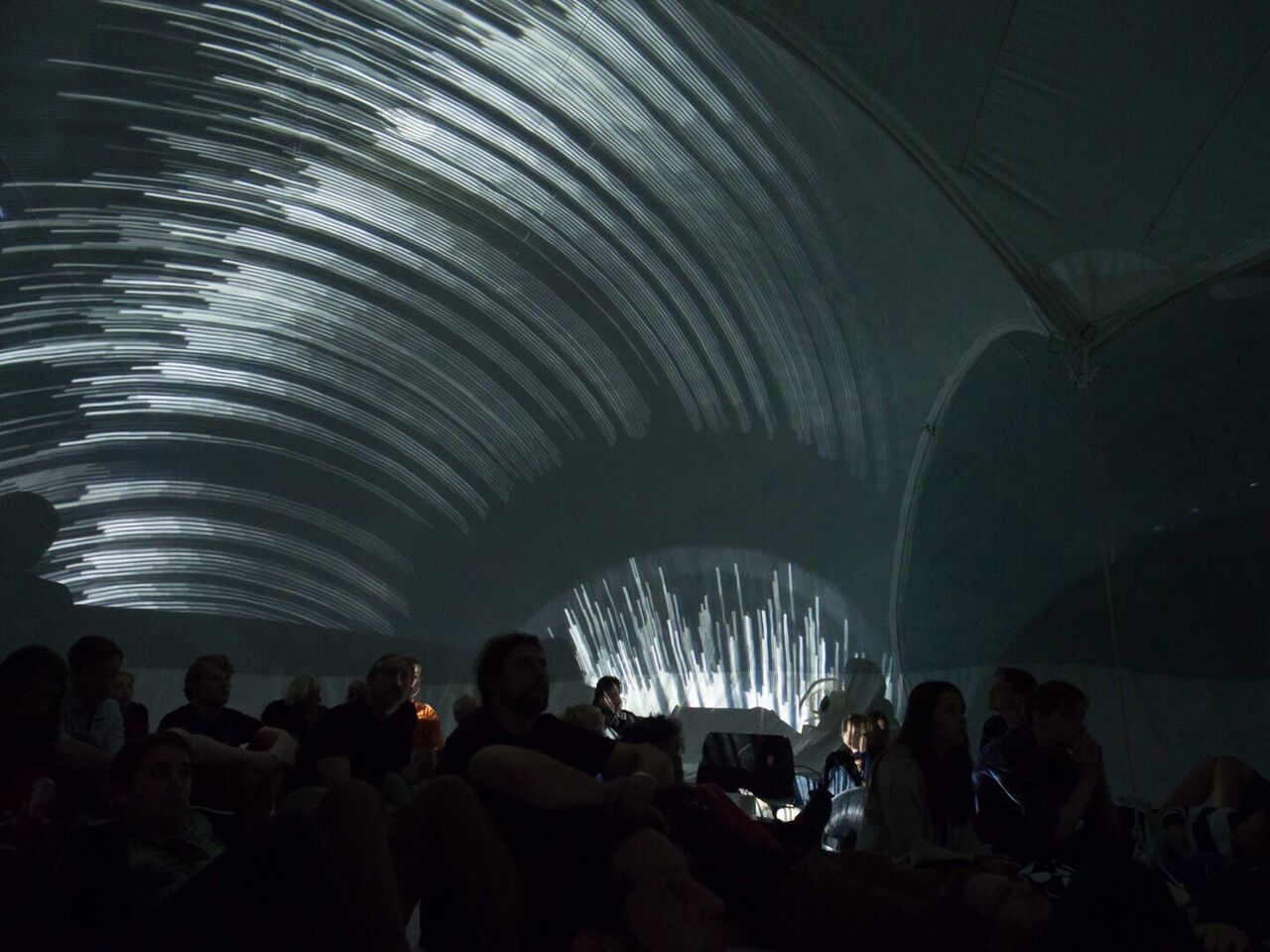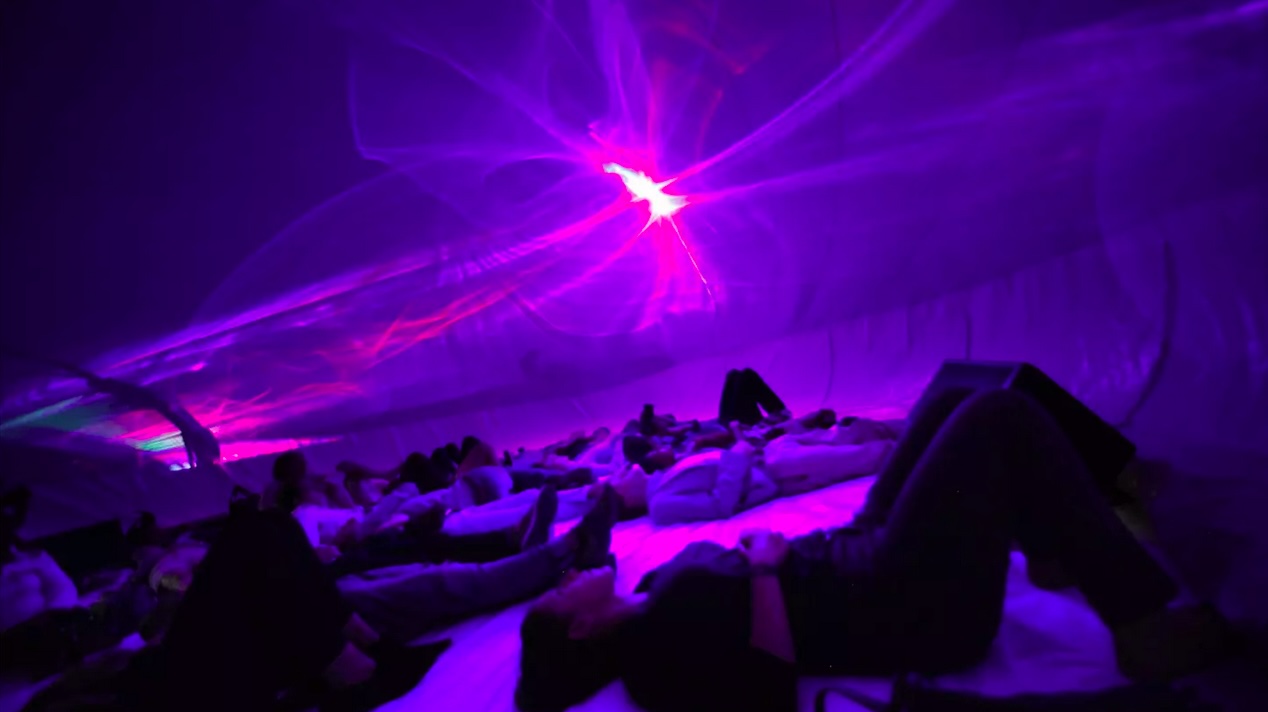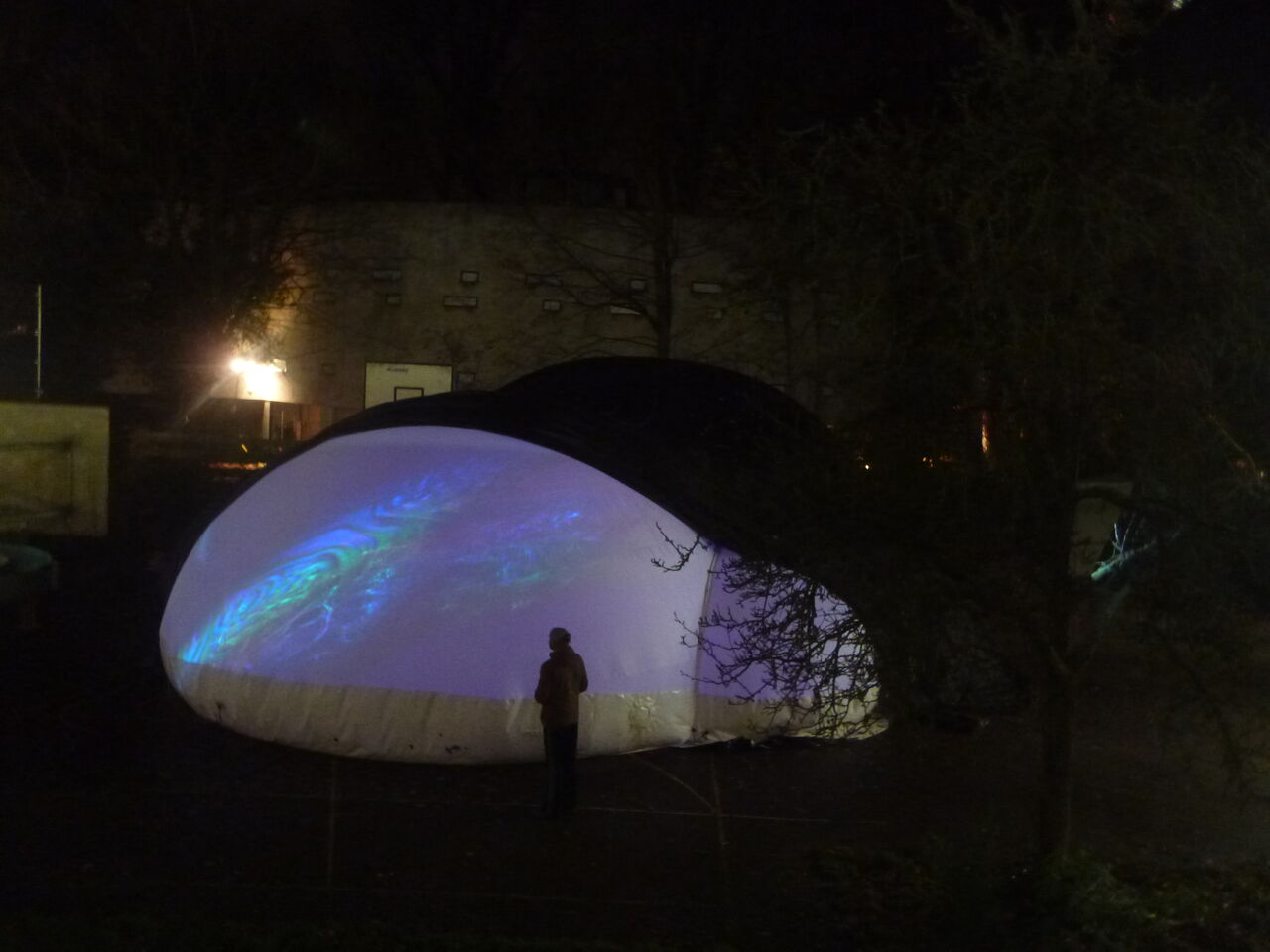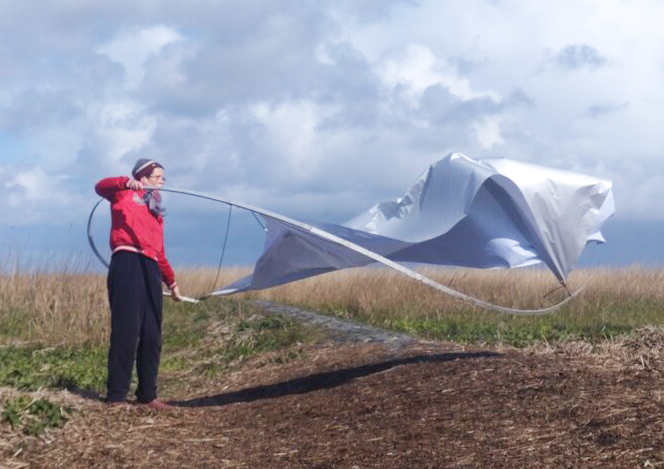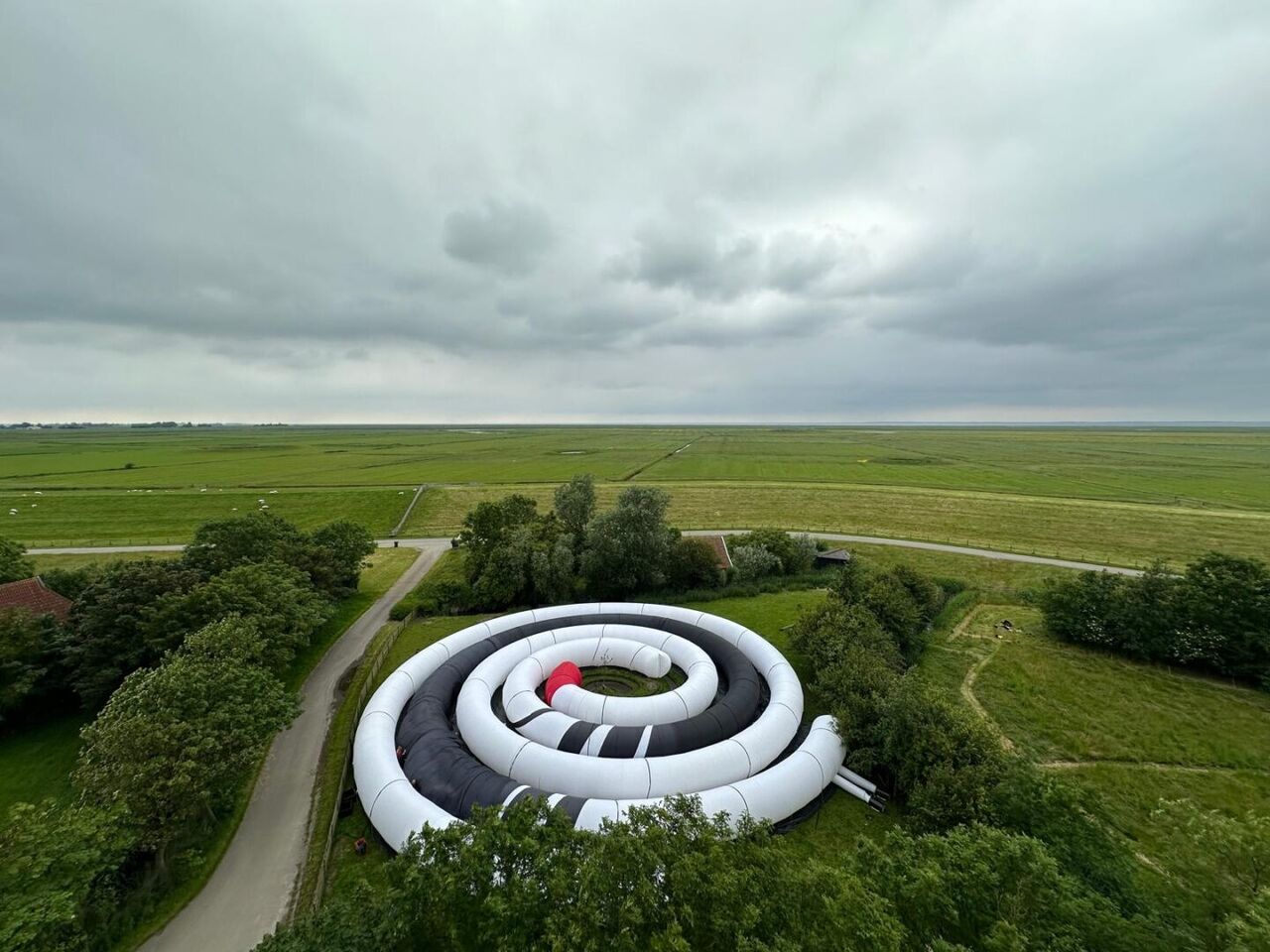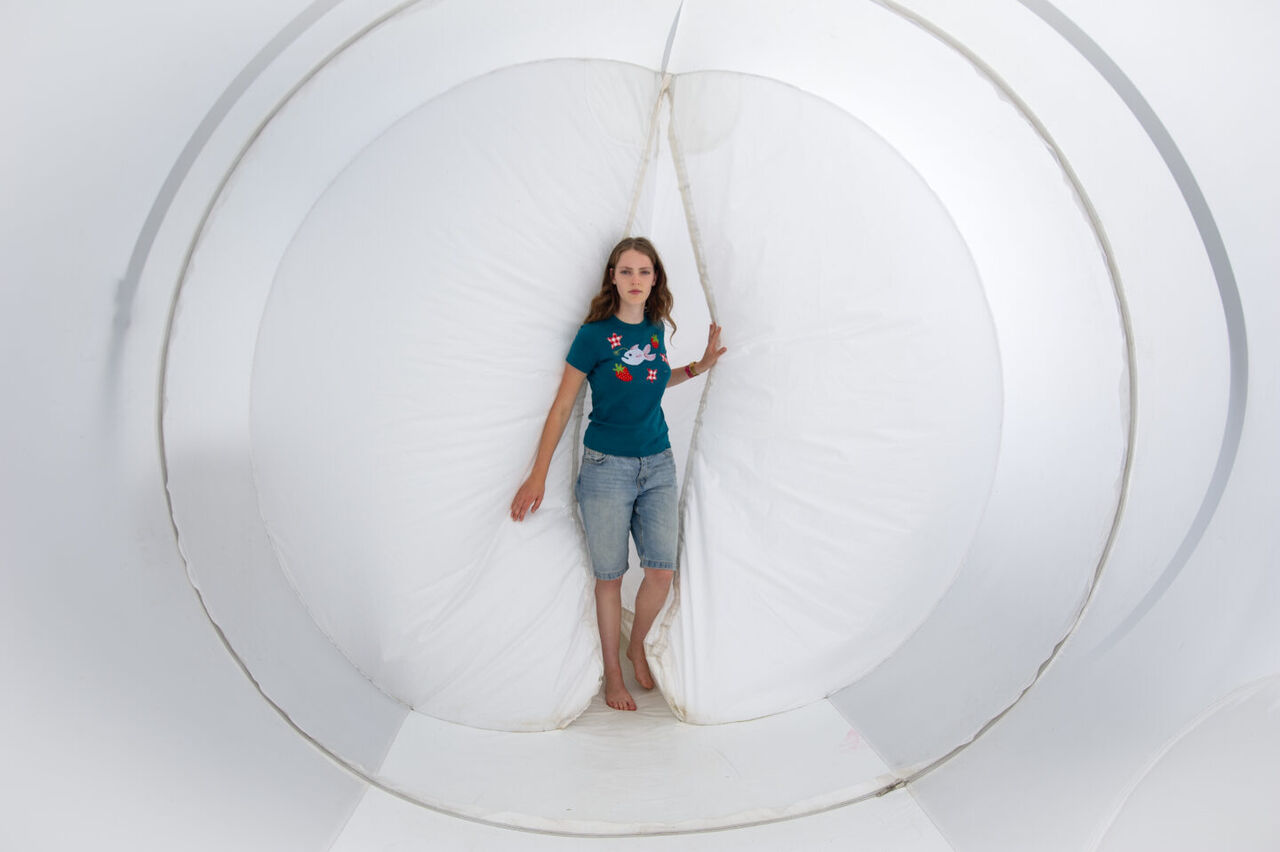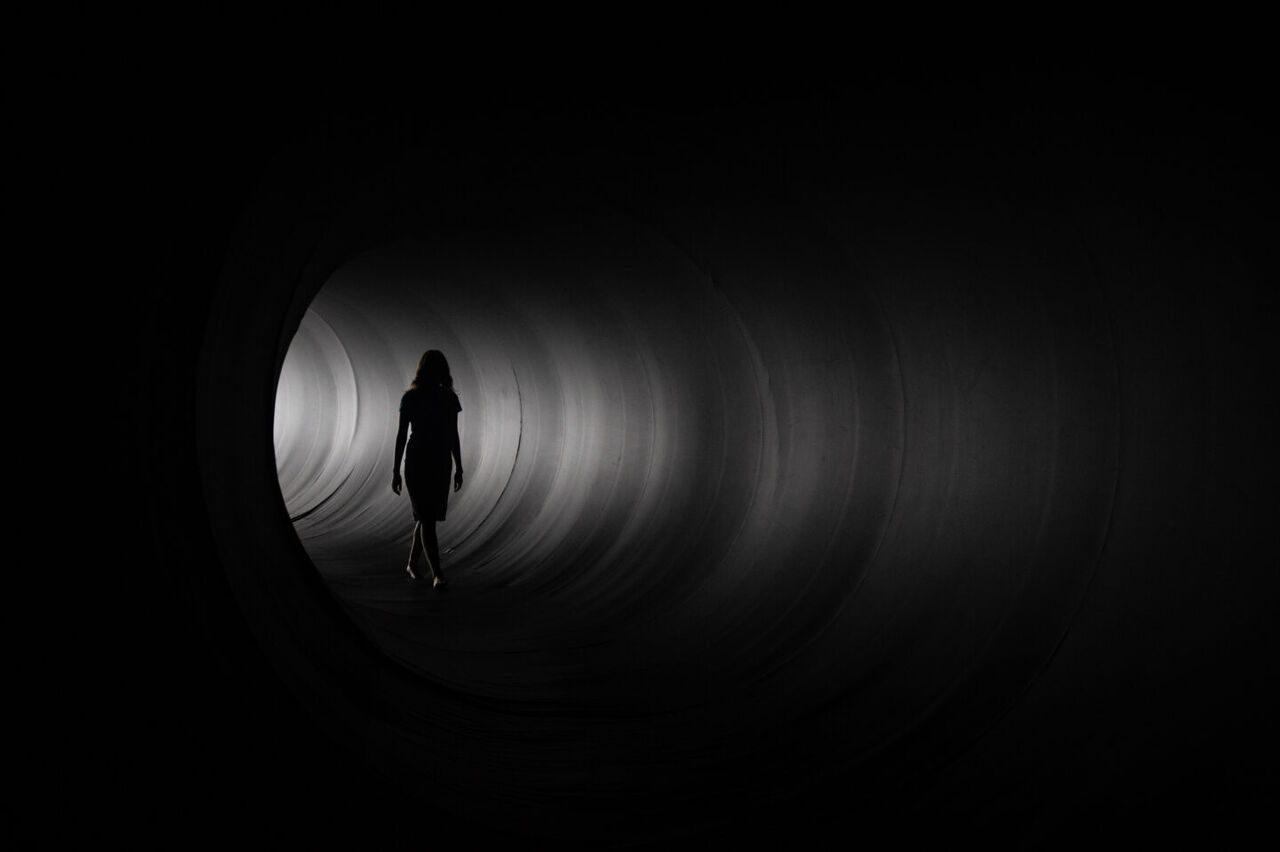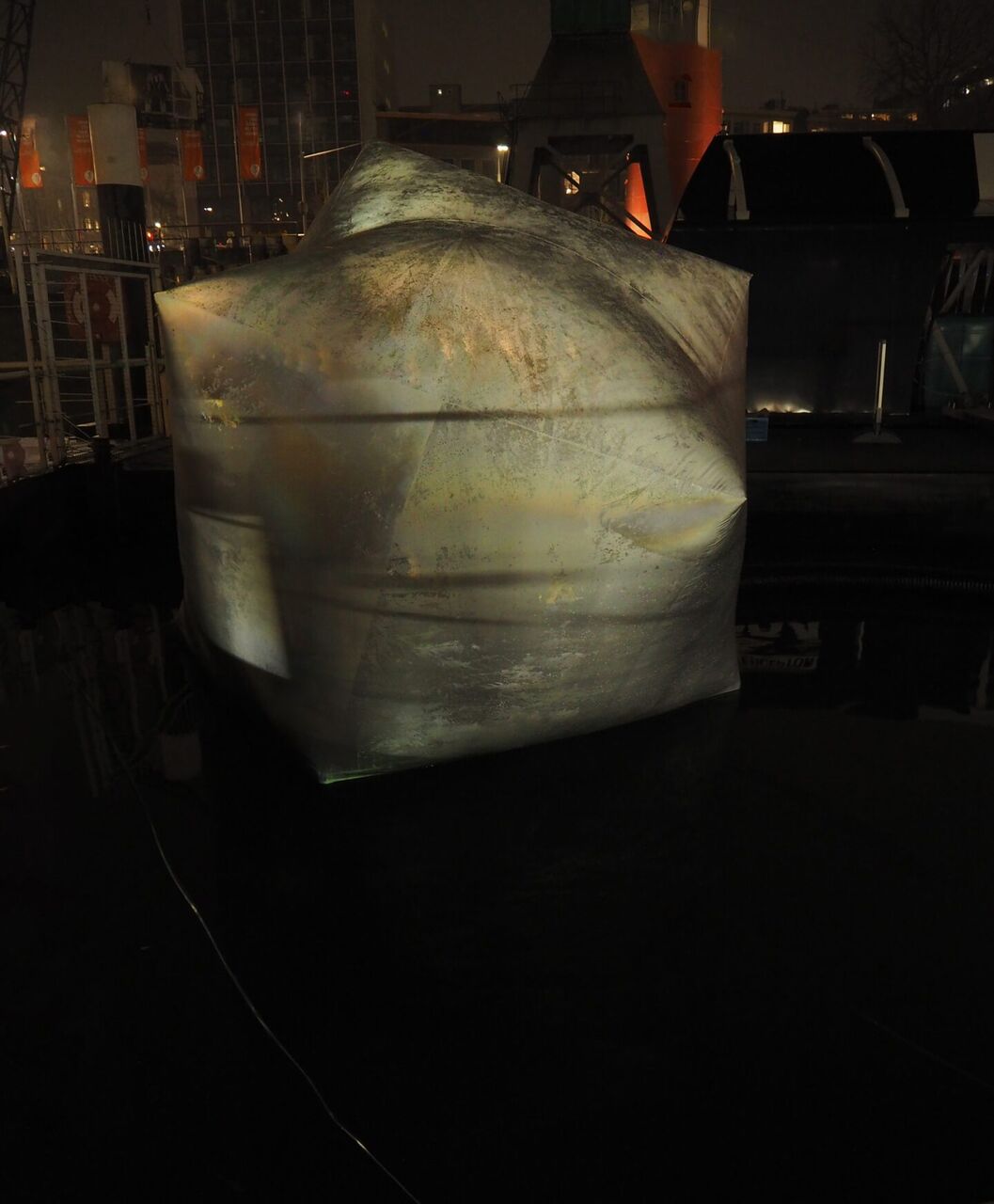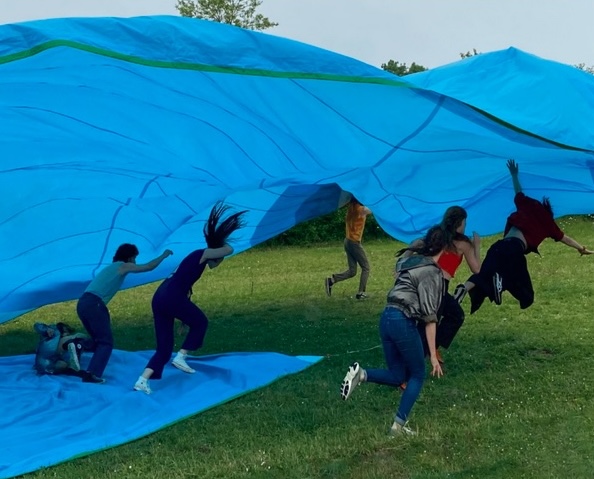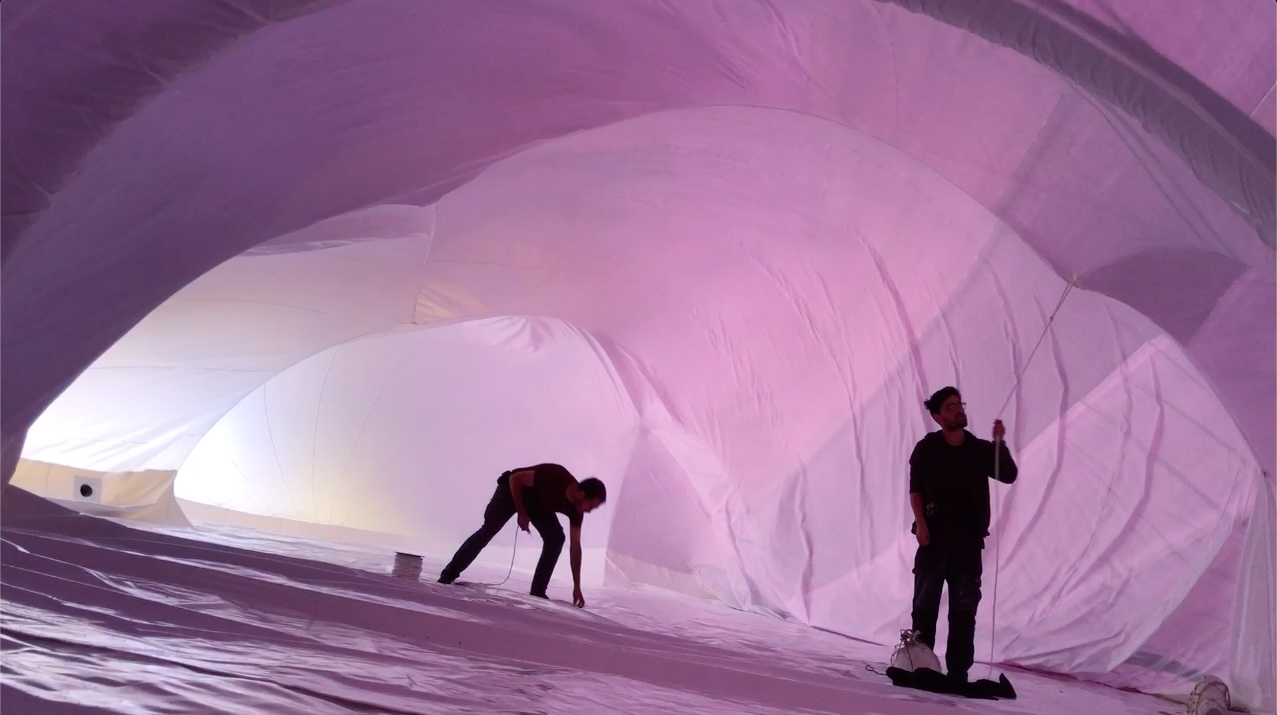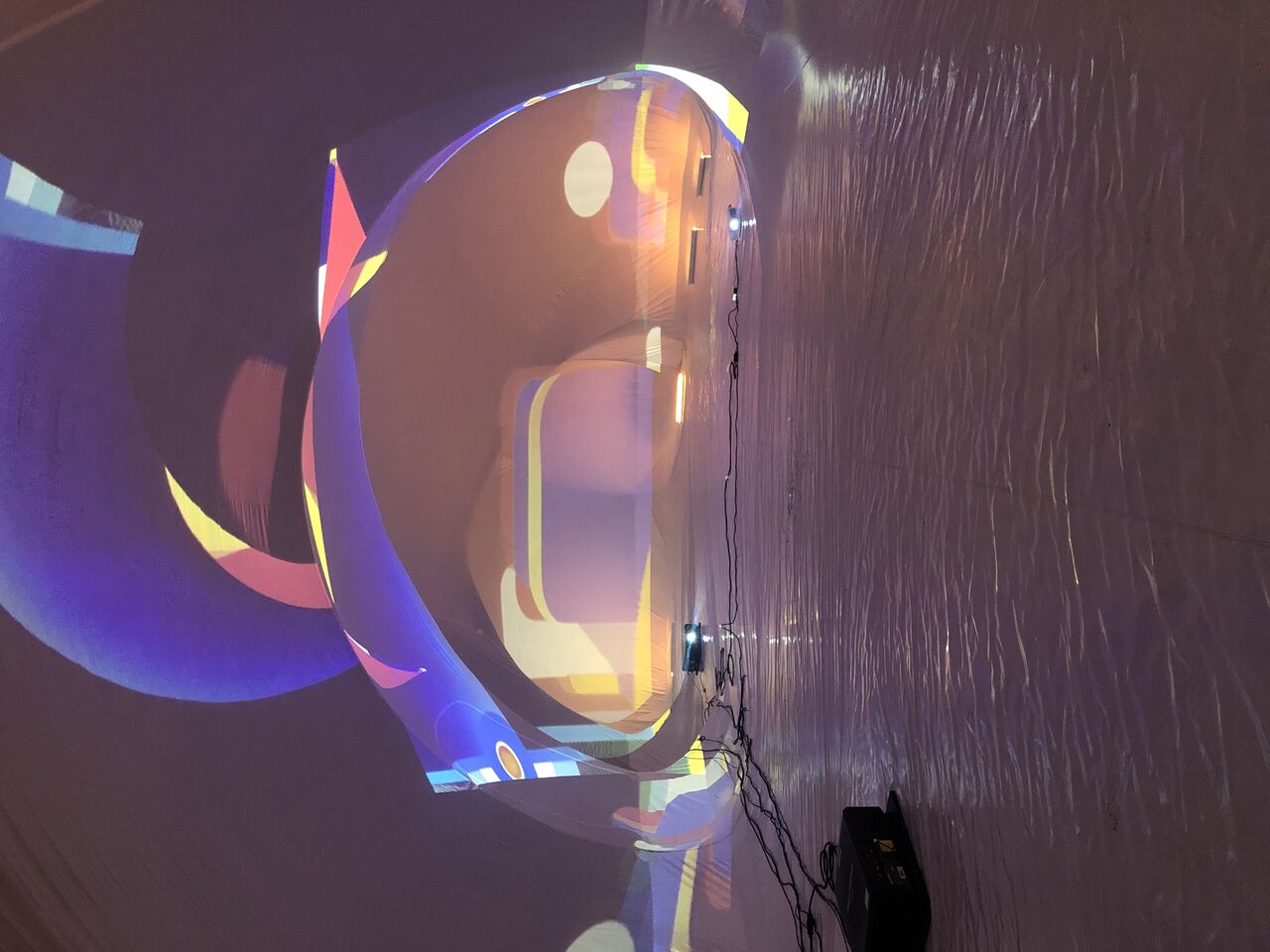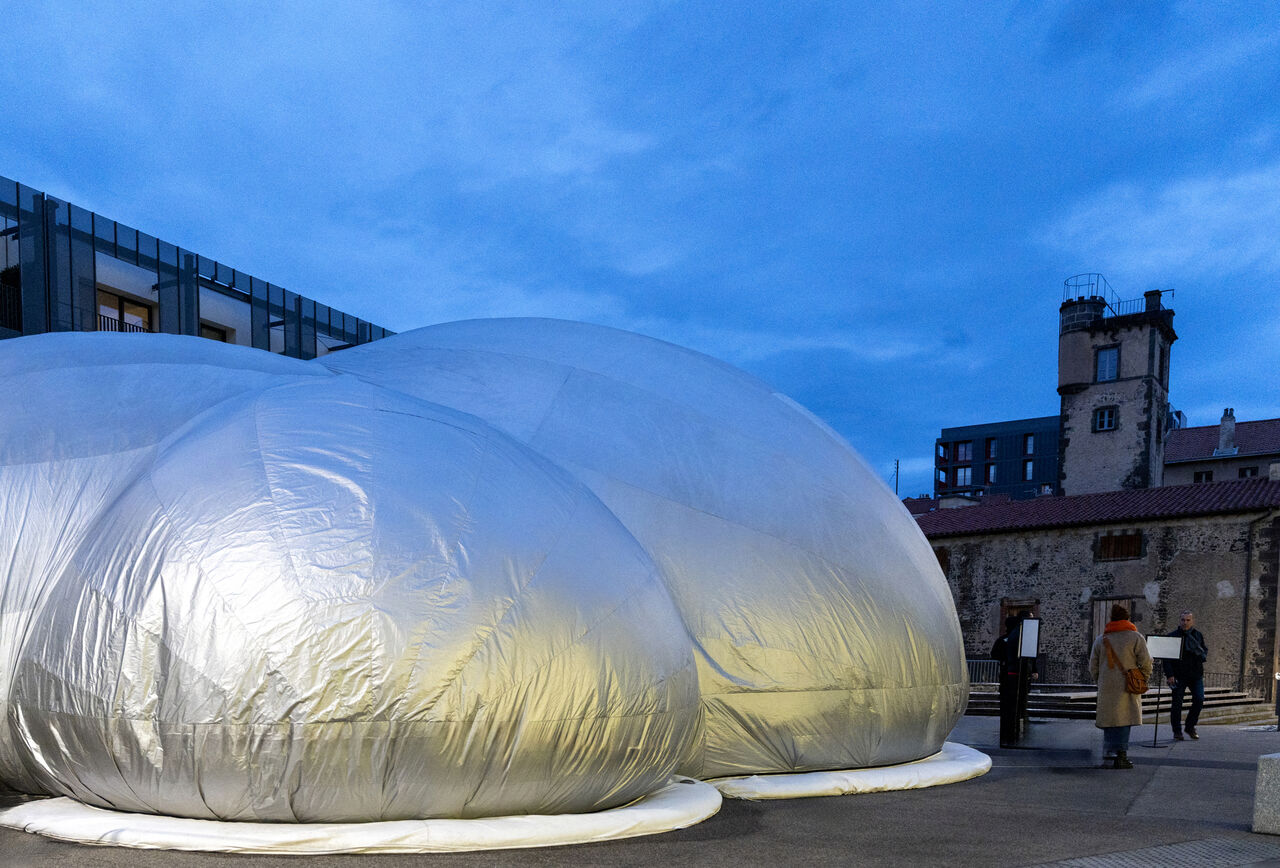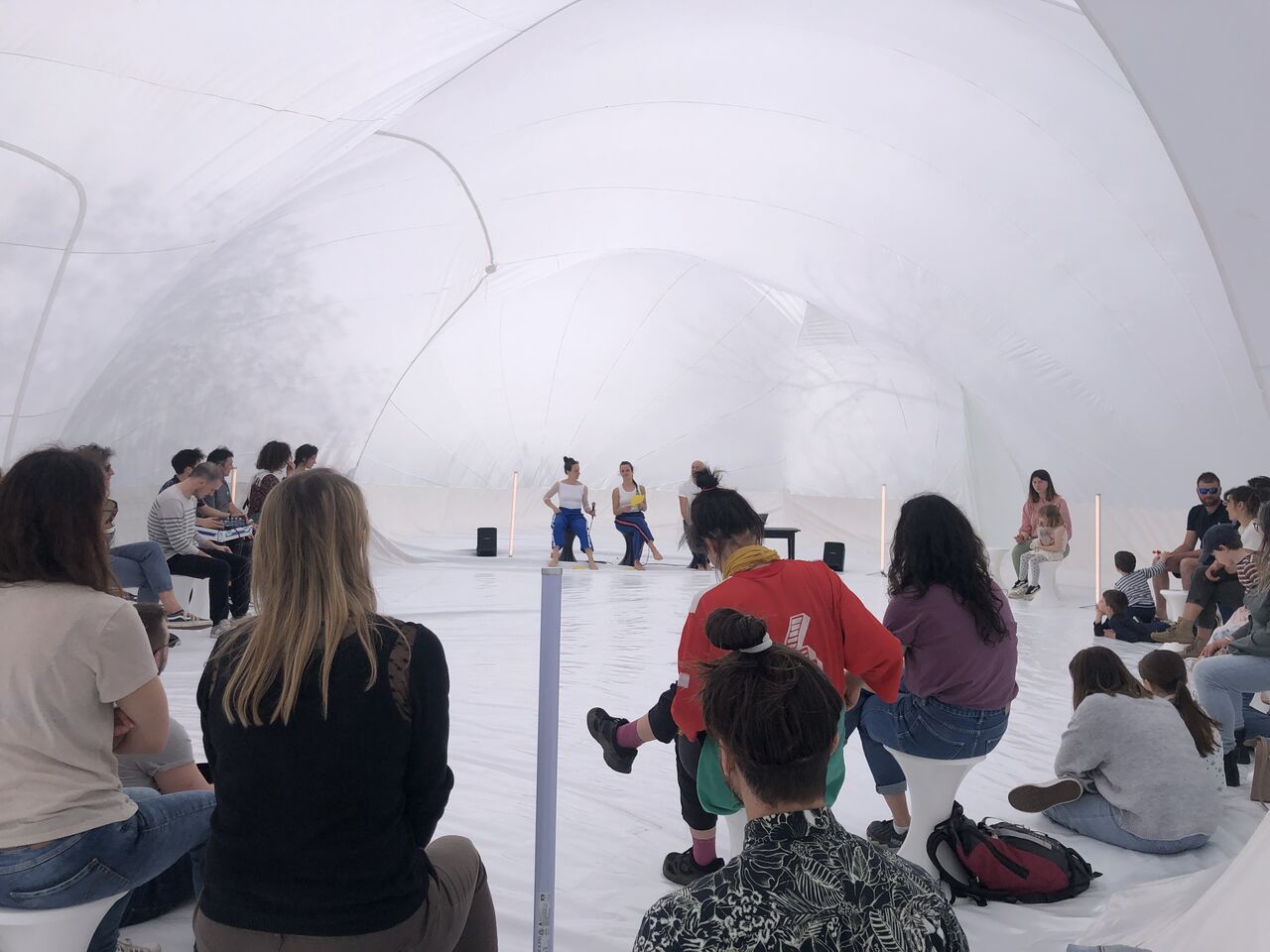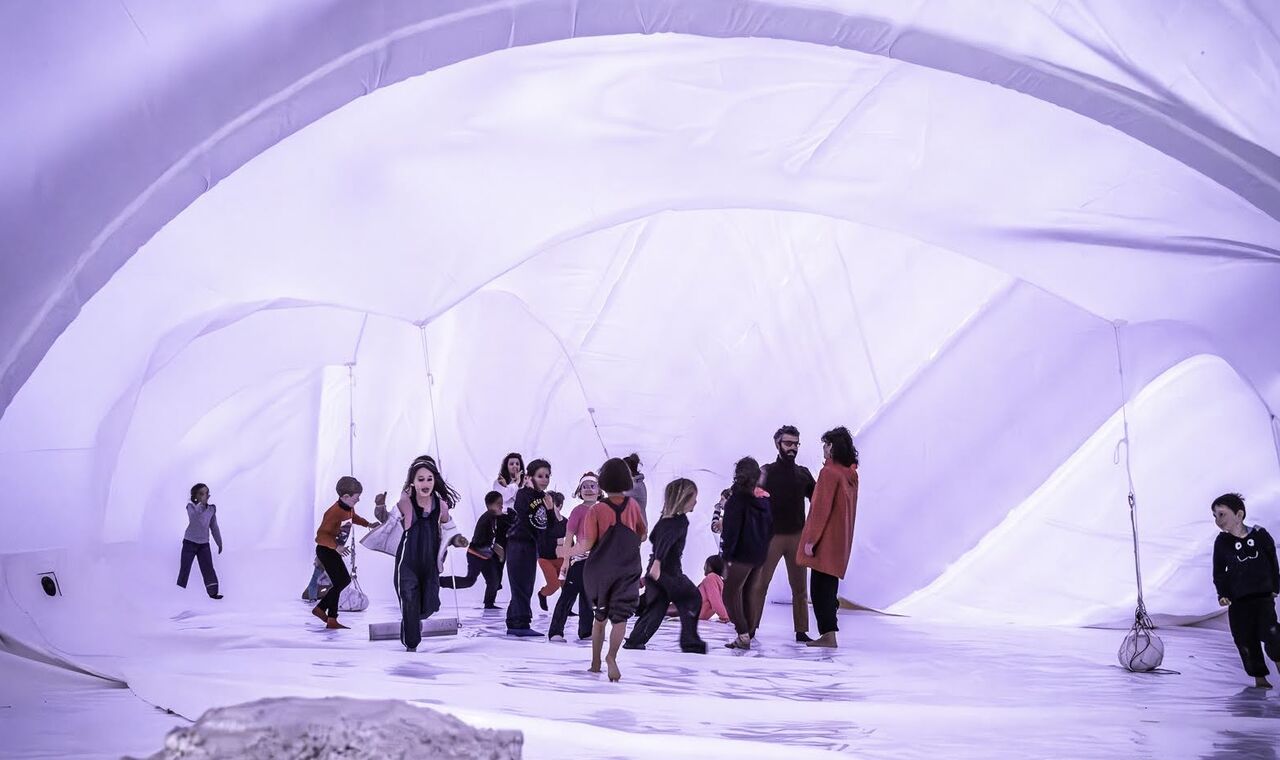Inflatable Ancestors
“Ancestors”? From each encounter, something passes into the next – how wind moves through fabric, pressure finds its own distribution, what air can do under constraint. These structures speak across decades, each teaching how the membrane responds to touch and weather.
Renaissance builders called it pneuma – air as breath, spirit, building material. Pneuma links body, architecture, and the cosmos, as the building comes to mediate between inhabitant and world, interior breath and exterior air.
Including images and textual reminiscences of working with inflatables, a lineage spanning two decades and several continents; from the early experiments with costumes for responsive environments to full-scale inflatable venues for choreographies, ritual journeys and audio-visual performances, including Curve, Sphæræ and UMAA
Photos by Cocky Eek, Theun Karelse, FoAM, Pieter Kers, Genaro Molina / Los Angeles Times, Nathalie van Helvoort, Damjan Švarc, Alain Mascaro, Aurelie Gillson and Marc Domage / UMAA / MIlle Plateaux / CCN La Rochelle, and others.
Imagine buildings that are lighter, more mobile, flexible, portable, and engaged in a reciprocal relationship with their surroundings and the elements. Imagine that we can create our homes or shelters wherever our heart is, with no fixed form, without spatial and temporal beginnings and endings.
Lightness as a state of Being
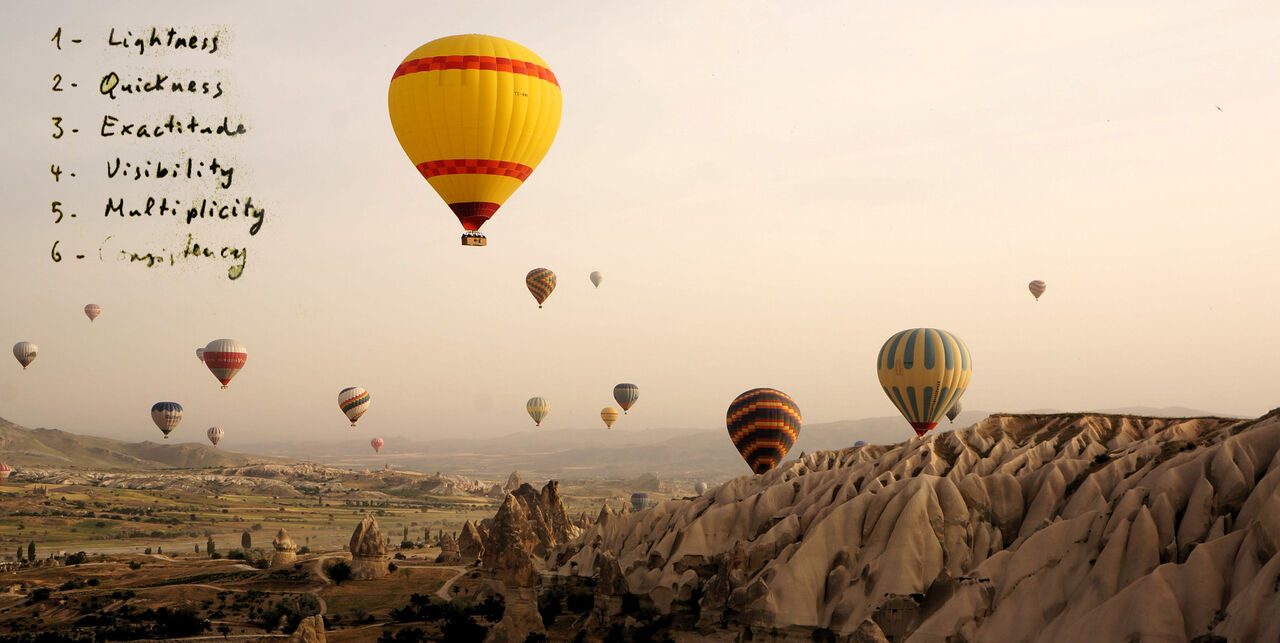
Italo Calvino talks about lightness in one of his Six Memos for the Next Millennium, where he describes a scene from Cervantes’ novel in which Don Quixote drives his lance through the sail of a windmill – a moment where the structure asserts its own force, lifting the human beyond his control.
|
Photo by Genaro Molina / Los Angeles Times
|
Kite-Dress (2002–2007): I’m hoisted into the air wearing a 60-foot long dress, held up by six Conyne kites that Patrick de Koning configured for lifting human weight. The kite-dress likes to write sculptural gestures in the air, uplifting the audience and fulfilling my dream of flying. Five successful flights so far. Before the first lift-off, I didn't speak for a week. Being suspended from a kite, how will that work? I could feel the system’s tension already working through my body. Anchored by a small truck, the wind dictates the flight’s height and duration. Launch and landing require a group of people prepared to read the kite’s moods. Sometimes we waited days for the kite to find its wind. Then, once airborne, tension on the thin wire made sounds like a long violin string.
|
Close Collaborators
Kite Dress: Patrick de Koning (NL), Frozen: the frozen Eemmeer lake, Space Auditorium: Theo Botschuijver (NL), Arianne en Koen van Tuijl (NL), Stripe: performers Ludmila Rodrigues (NL), Wen Chin Fu (NL), Tension workshop: Patrick de Koning (NL), Anna Rewakowicz (PL), Hiaz Gmachl (AT/UK), Rachel Wingfield (UK), Theun Karelse (NL), Linda Karlson (SE), Heath Bunting (UK), Kayle Brandon (UK), Ruben Bus (NL), Maja Kuzmanovic (NL/HR), Nik Gaffney (AU/BE), Lina Kusaite (LT/BE). TRG: Maja Kuzmanovic (NL/HR), Nik Gaffney (AU/BE), Theun Karelse (NL), Stephen Pickles (AU), Lina Kusaite (LT/BE). Inflatable Skins: Lina Kusaite (LT/BE), Maja Kuzmanovic (NL/HR), model Tessa Joosse (NL), Whirly Wind: in parallel with Maria Blaisse (NL), Bungee Cube: Ruben Bus (NL) Shelter: on invitation by Maurizio Montalti (NL), Airport Seppe: Ed van Hinte (NL) performers: Silvia Janoskova (NL), Ludmilla Rodrigues (NL), Gabey Tjon a Tham (NL), Inflatable Skins: performers: Camila Valenzuela (CL), Isabel Rocamora (UK), AV media: Nik Gaffney (AU/BE), Maja Kuzmanovic (NL/HR) Stripe: performers: Kenzo Kusuda (NL), Aki Onda (JP), Gertjan Prins (NL), Le Vide et la lumiere: Patrick Gyger (FR), Evelina Domnitch (NL), Dmitry Gelfand (NL), Blaas: Boukje Schweigman (NL), Ibelisse Guardia Ferragutti (NL), Jochem van Tol (NL), Jurr van Diggele (NL), Sphæræ: Robert Crouch (US), Evelina Domnitch & Dmitry Gelfand, (BY/NL), William Basinski (US), Richard Chartier (US), Valekriy (NL), Francisco López (NL/ES), Raphael Vanoli (NL), Nenad Popov (NL), Erfan Abdi (NL), Barbara Ellison (NL), Paul Prudence (UK), O.M.F.O.(NL). Martijn van Boven (NL), E Jet Smits (NL), duard Haiman, Michael Holub, Ingrid Lee (US/CN), V4W.ENKO & Vadim Smakhtin (RU/UA), Bas van Koolwijk (NL), Robert Curgenven (AU), Robin Koek (NL), Micha Daams & Philip Vermeulen (NL), Matthijs Munnik (NL), Eric Parren (US), Matteo Marangoni, (IT) Yolanda Uriz (ES), Lola Bezemer (NL), Mike Rijnierse & Rob Bothof (NL), Joris Strijbos & Yamila Rios (NL), Dieter Vandoren & Mariska de Groot (BE/NL) Arthur I. Miller (US), Chris Duncan (US), Big City Forum with Soo Kim and Connie Samaras (US), Jeff Cain with Ezekiel Honig (US), France Jobin + Fabio Perletta with xx+xy visuals, Theun Karelse (NL), Mattia Casalegno (US), Intimatchine (US), David O’Brien, Christopher O’Leary with Isaac Schankler (US), Lucky Dragons (US), Mike Harding/Touch (US), Yann Novak (US), Steve Roden (US), Julie Tolentino (US) and Virons (US). Curve: Boukje Schweigman (NL), Erik van Dongen (NL), Rutger Zuydervelt (NL), Stephan Valk (NL), Rein (NL), Sinking in Between: Nicky Assmann (NL), UMAA: Olivia Grandville (FR), Aurelie Gillson (FR), Alexandre Bourbonnais (FR), Nathalie Nillas (FR).
And many more…
